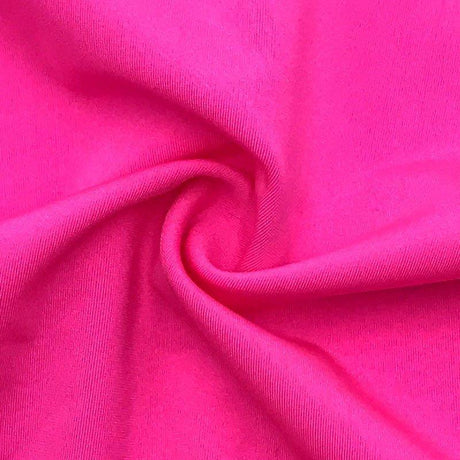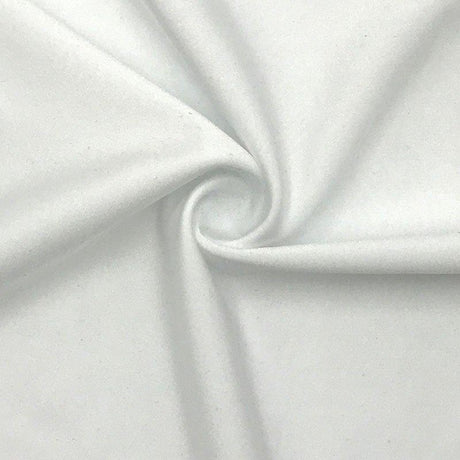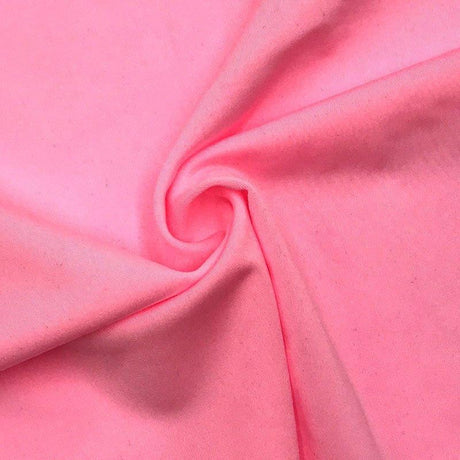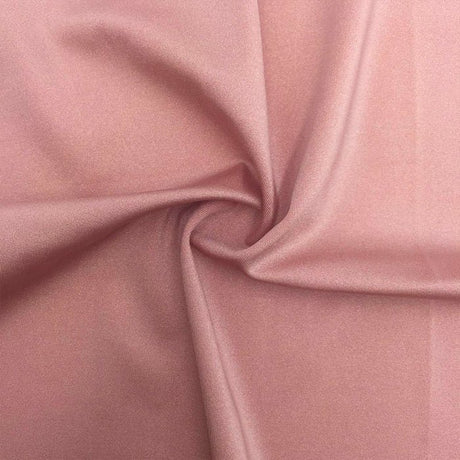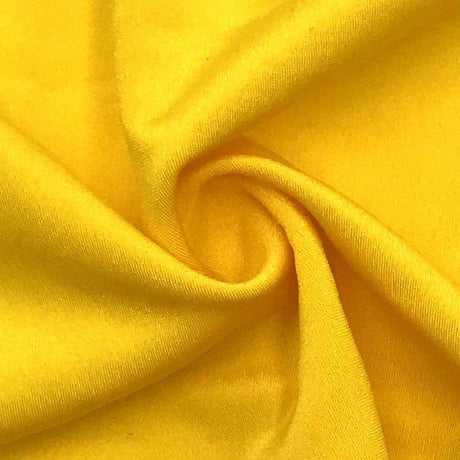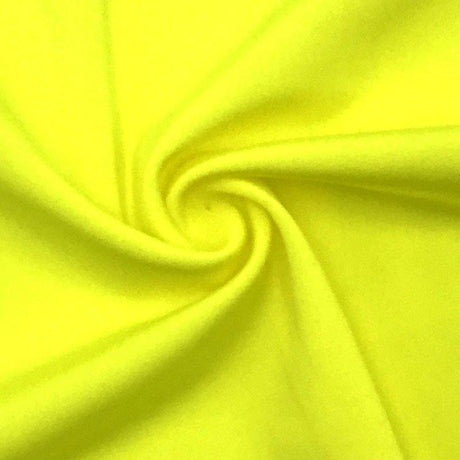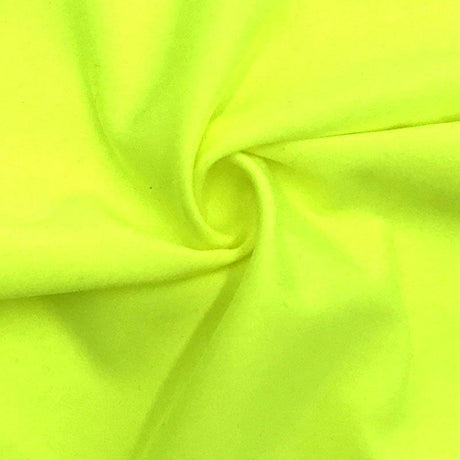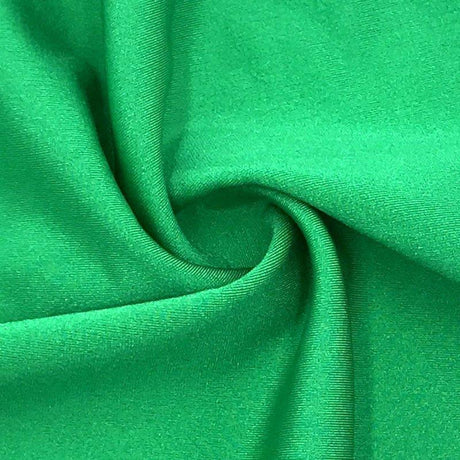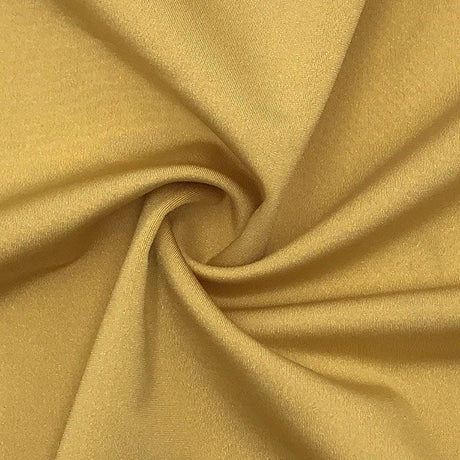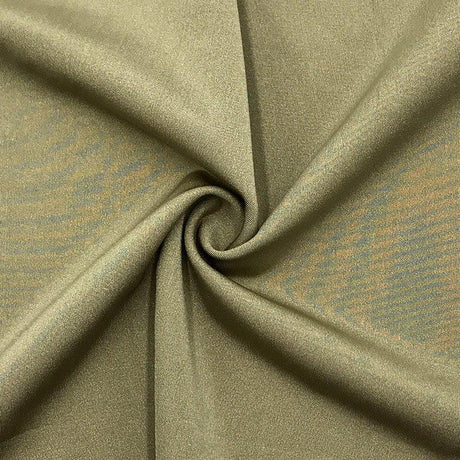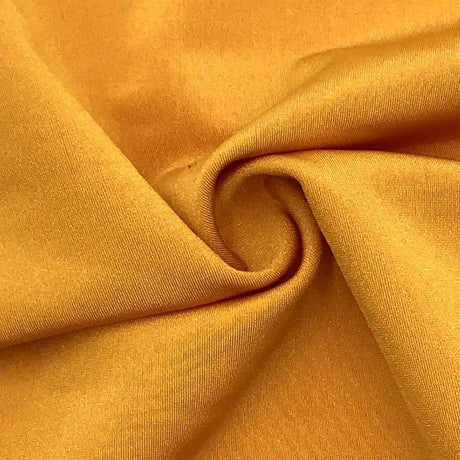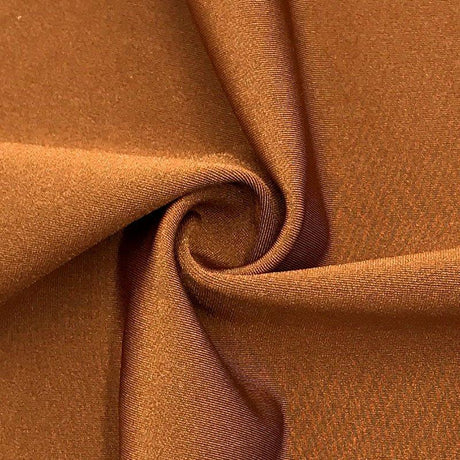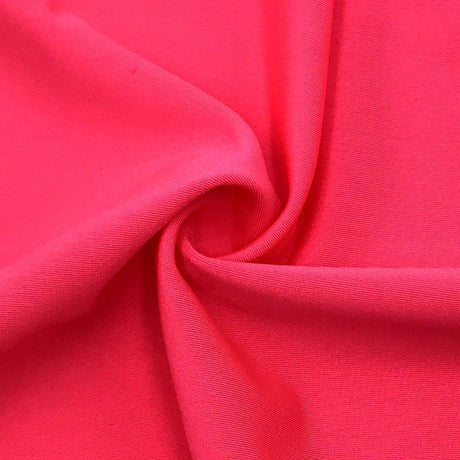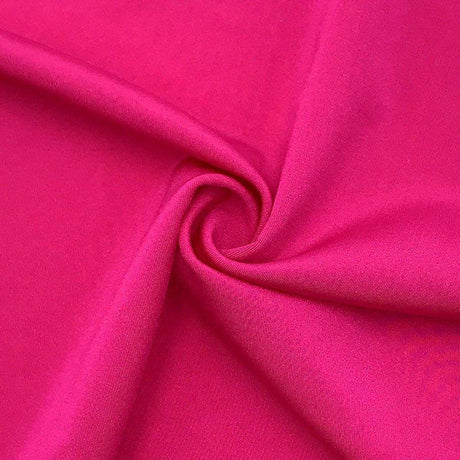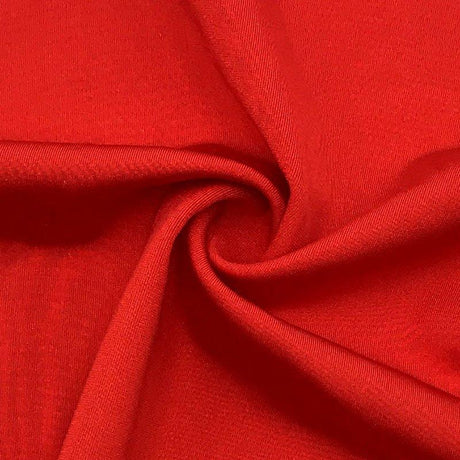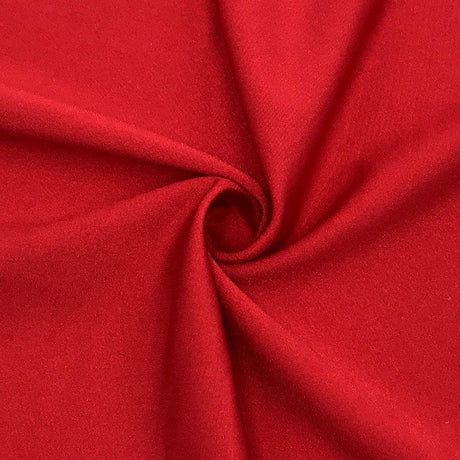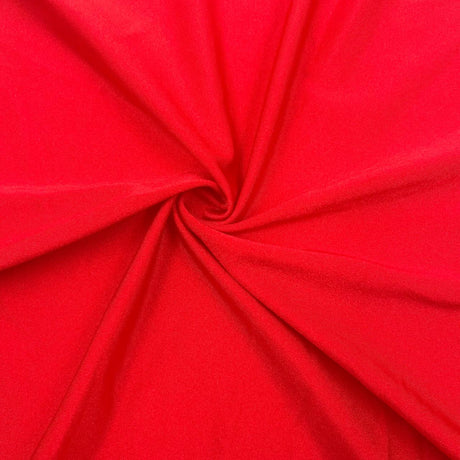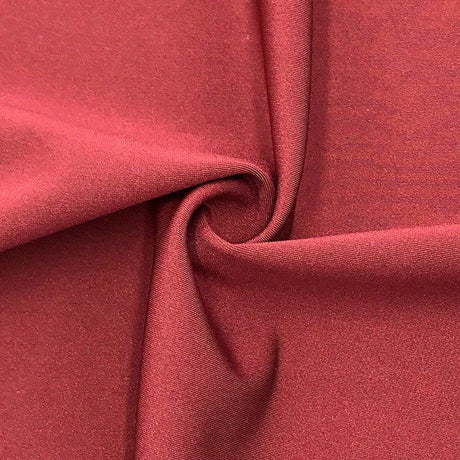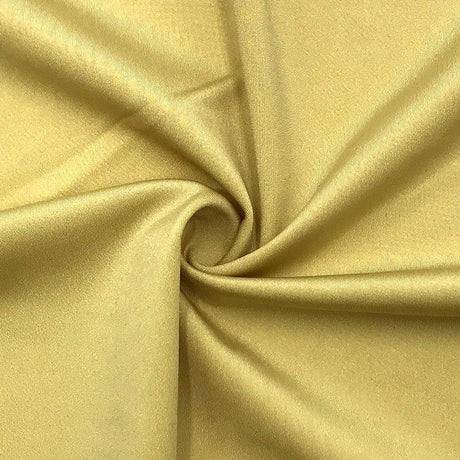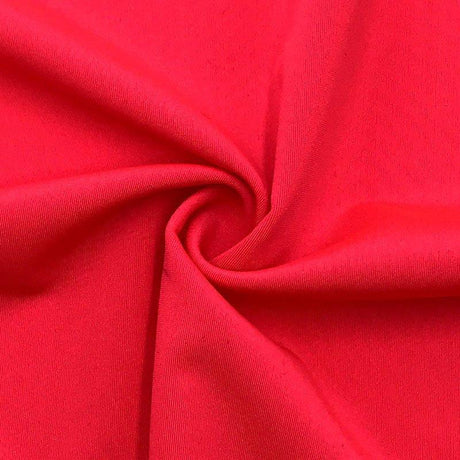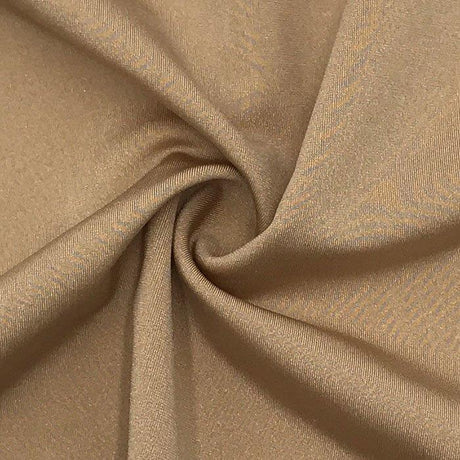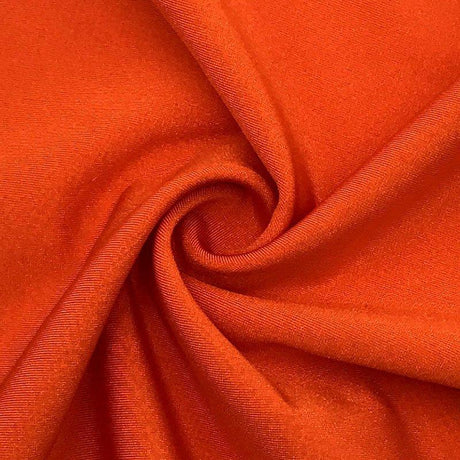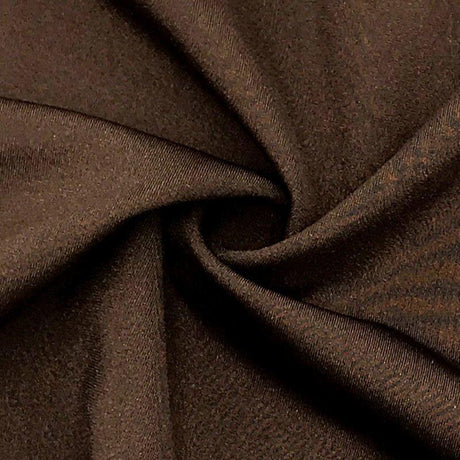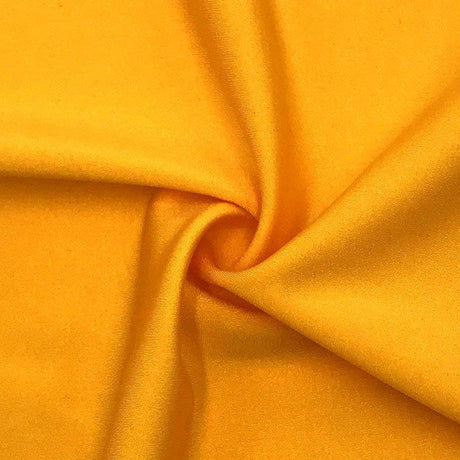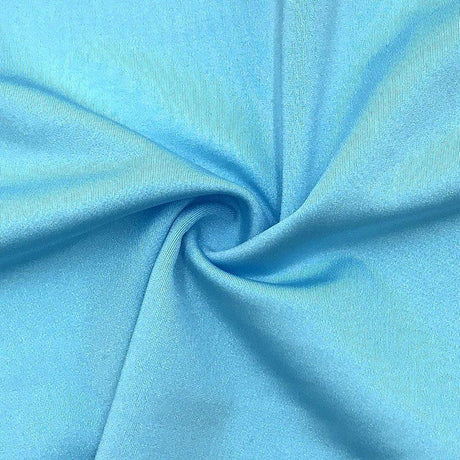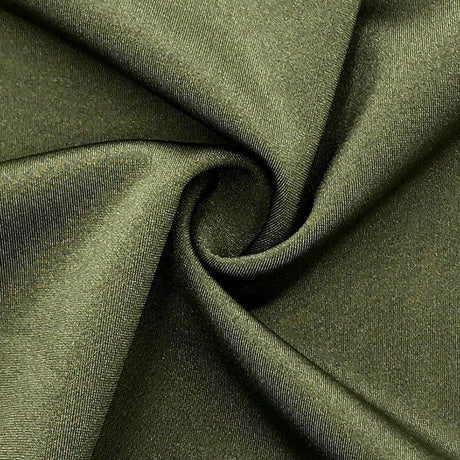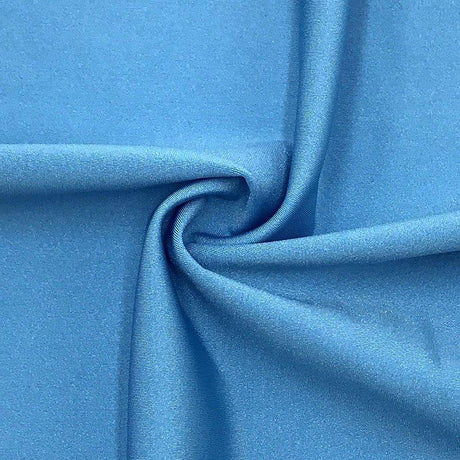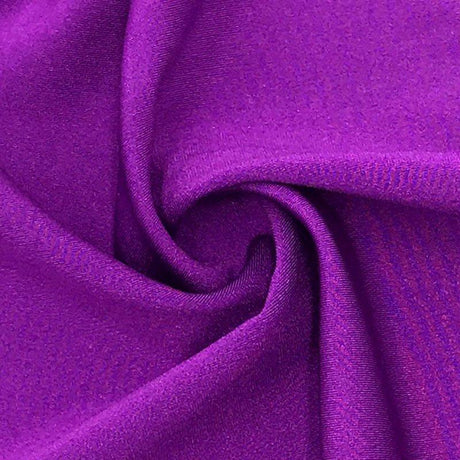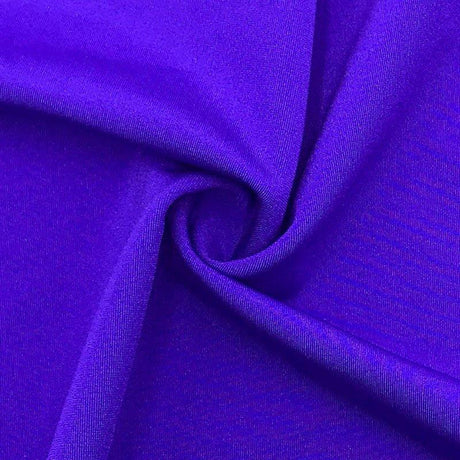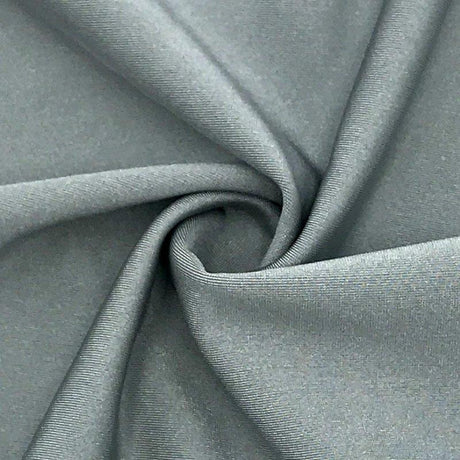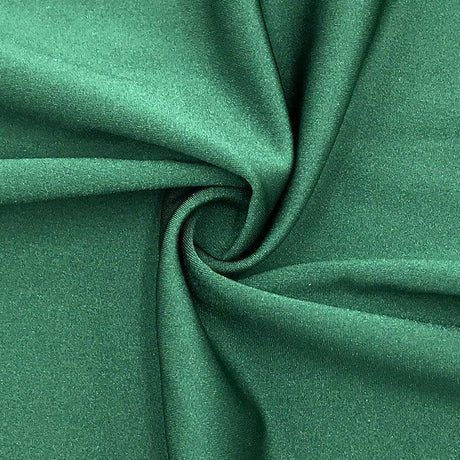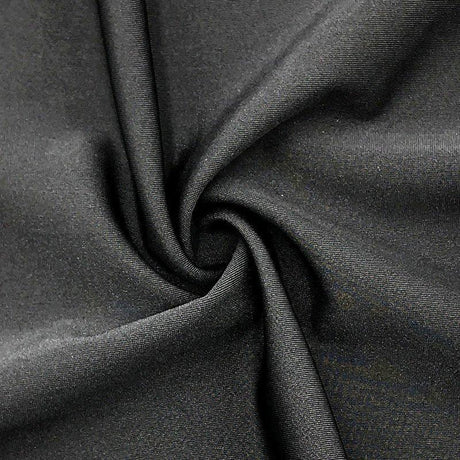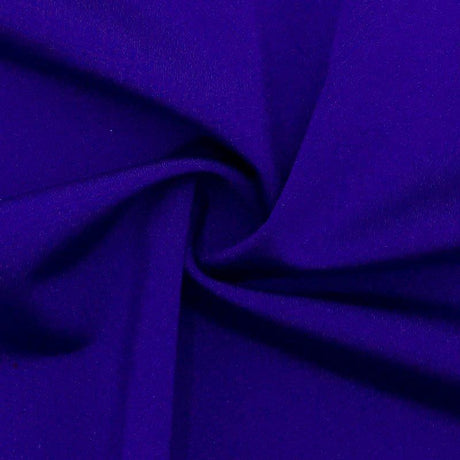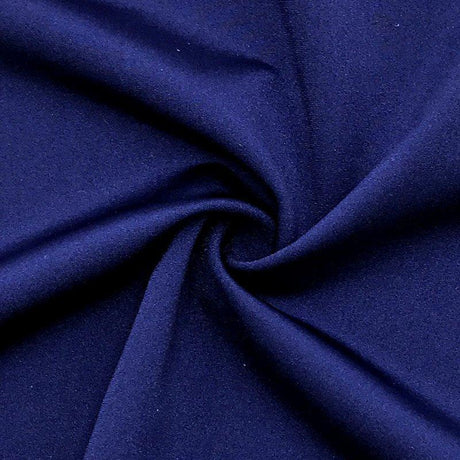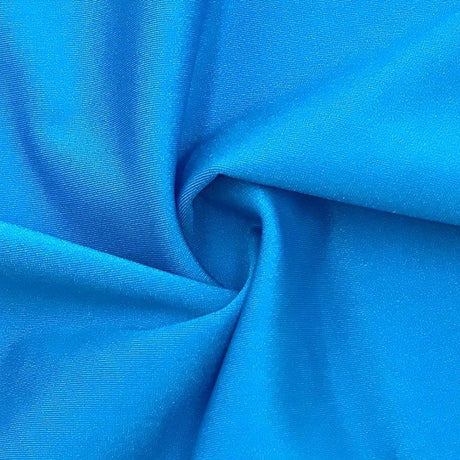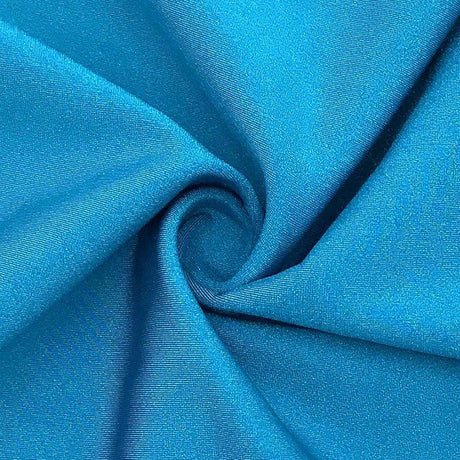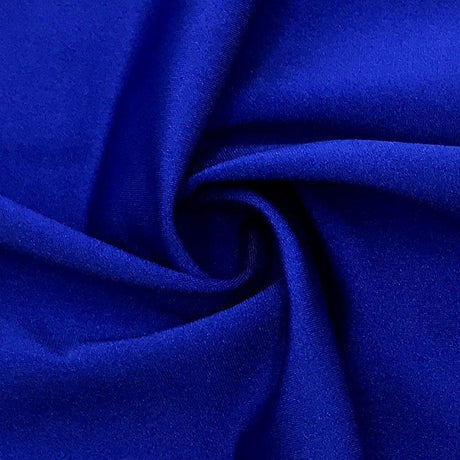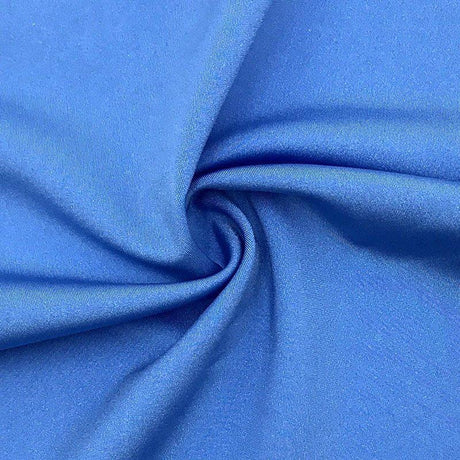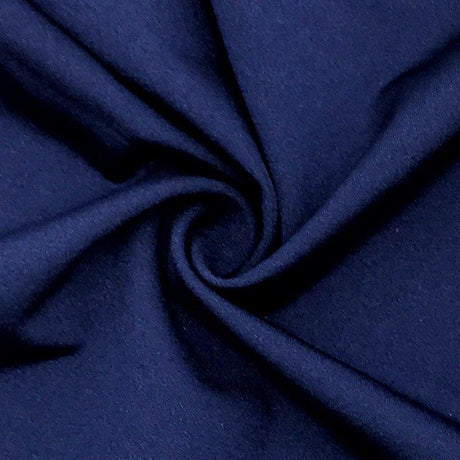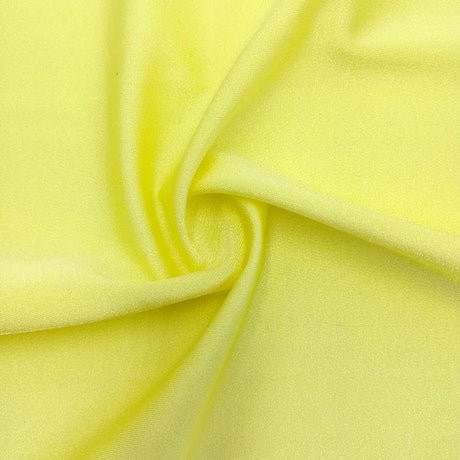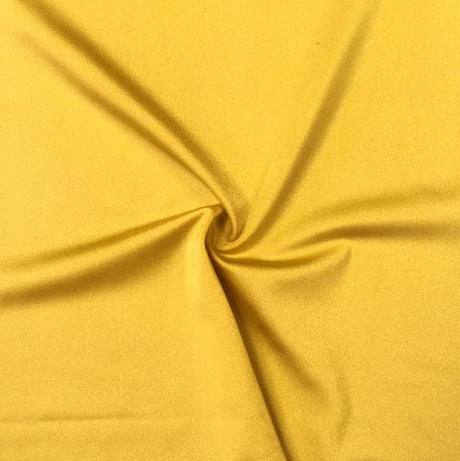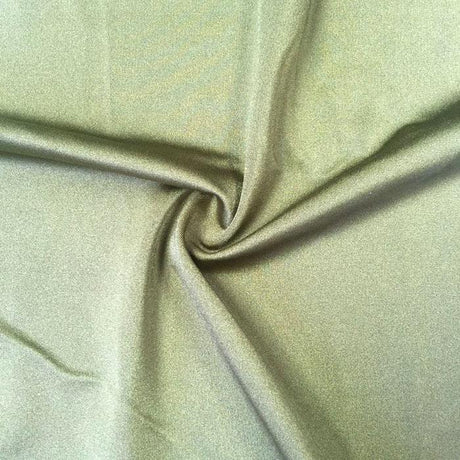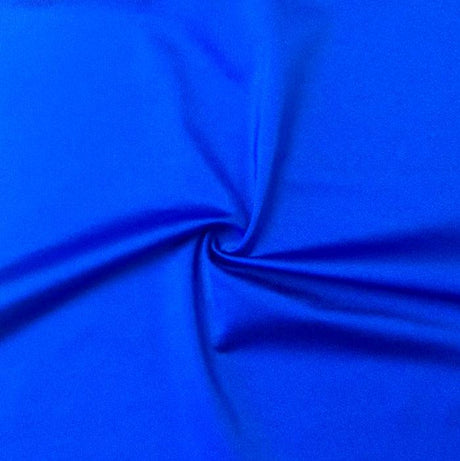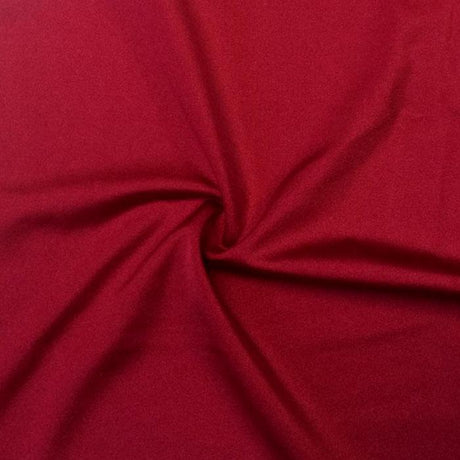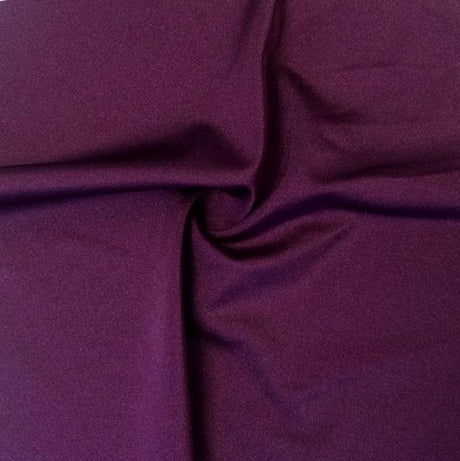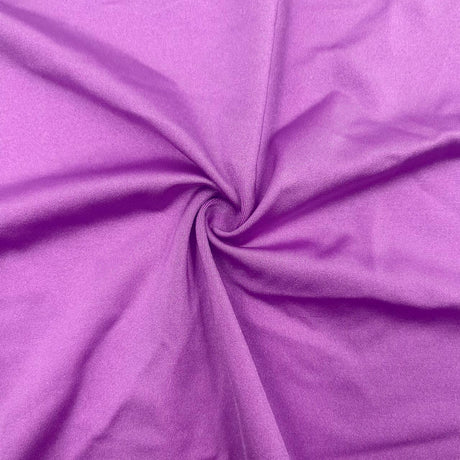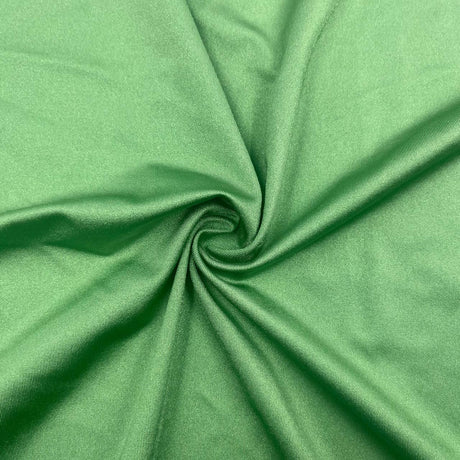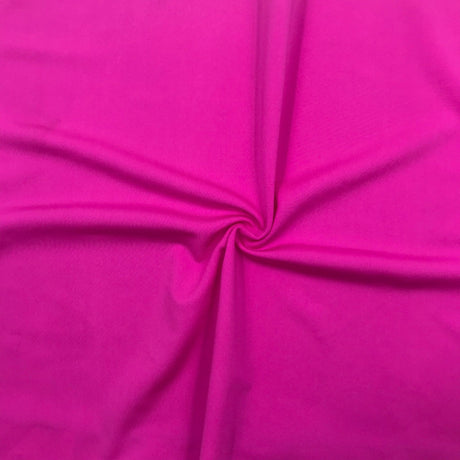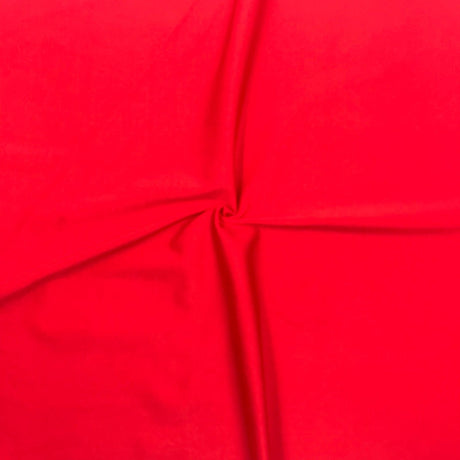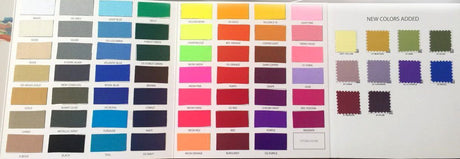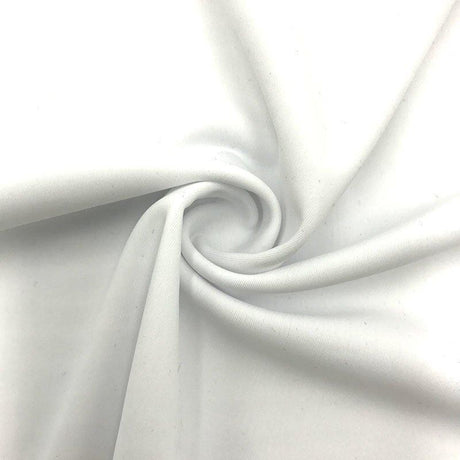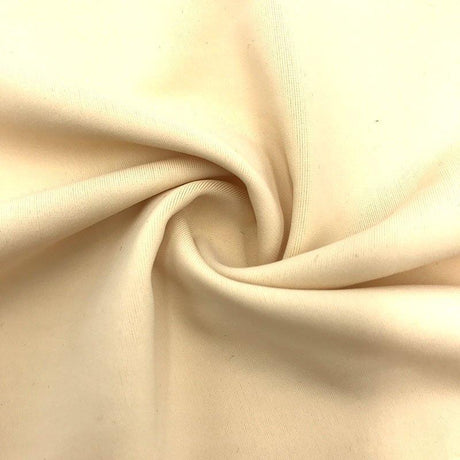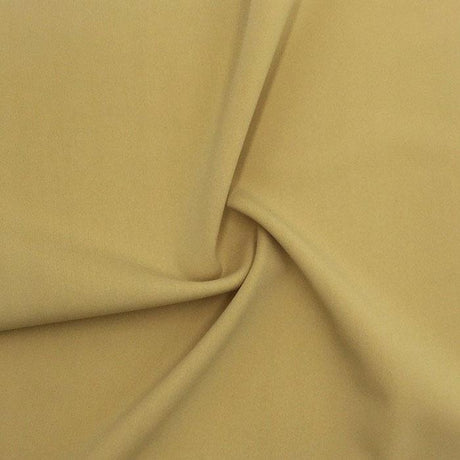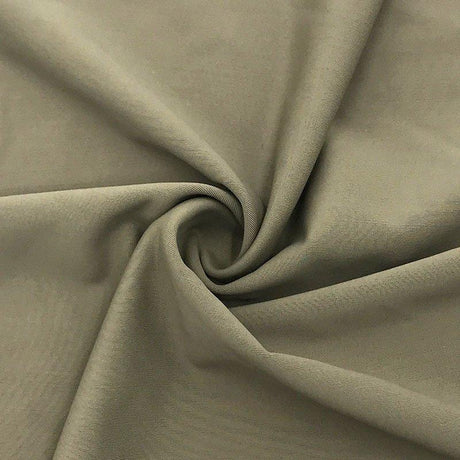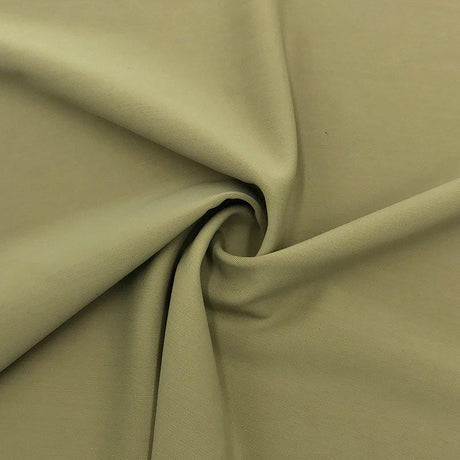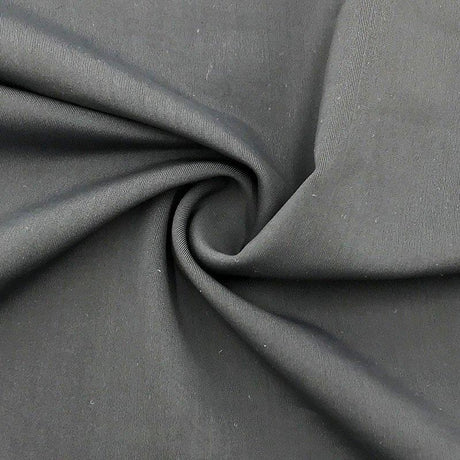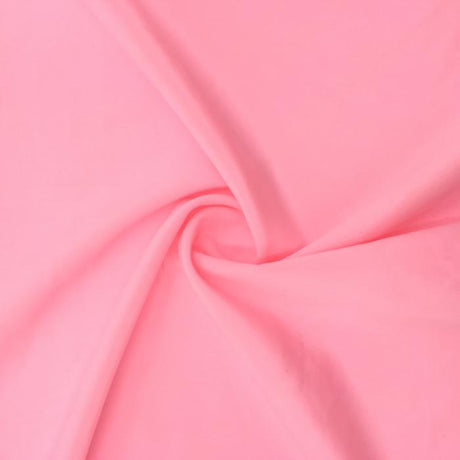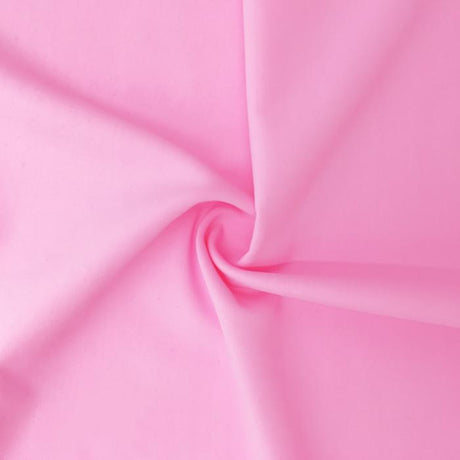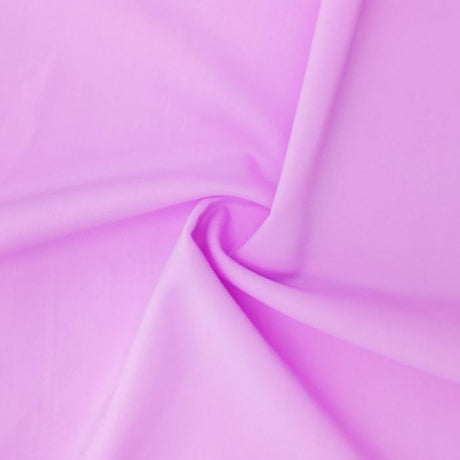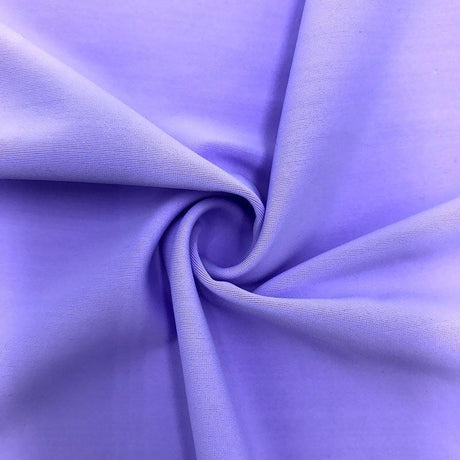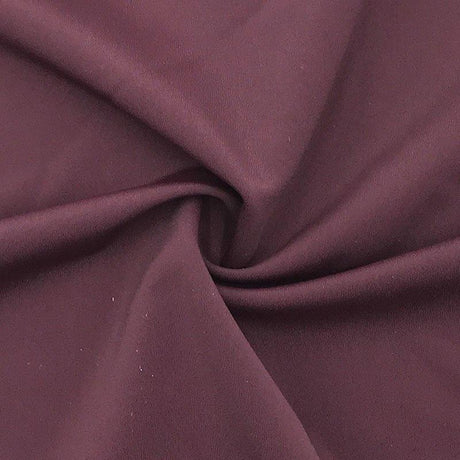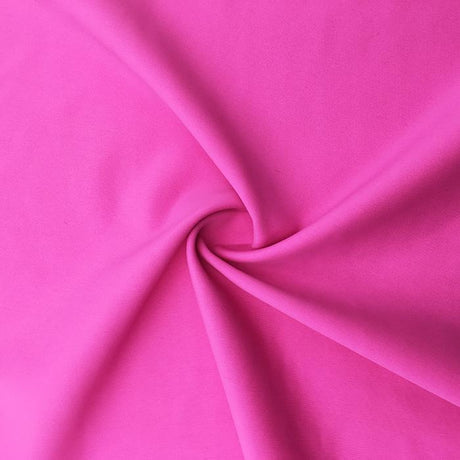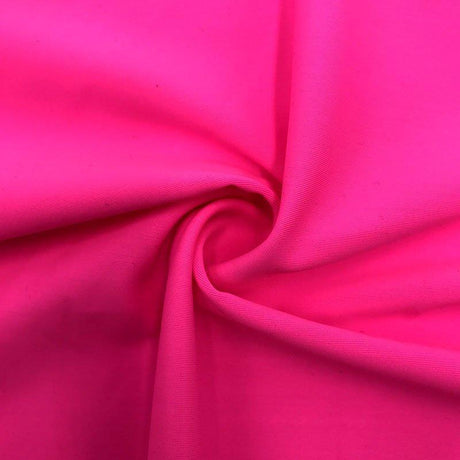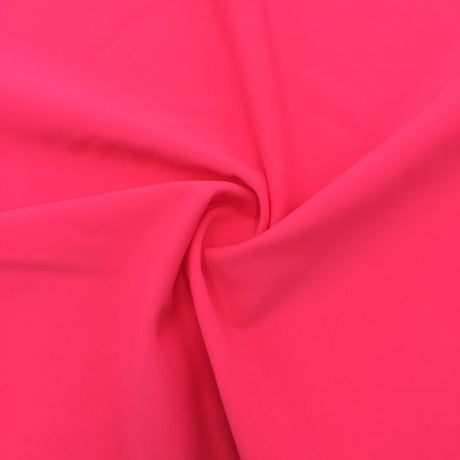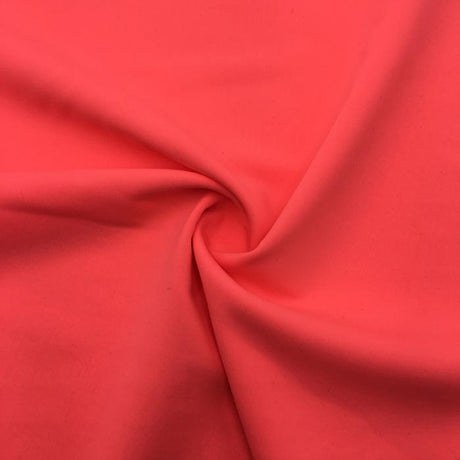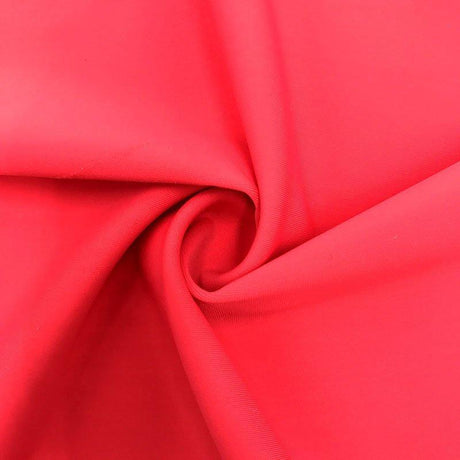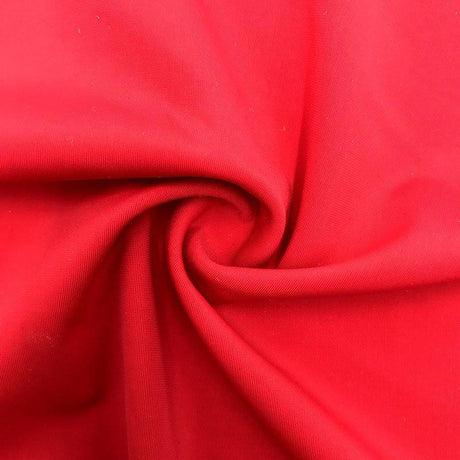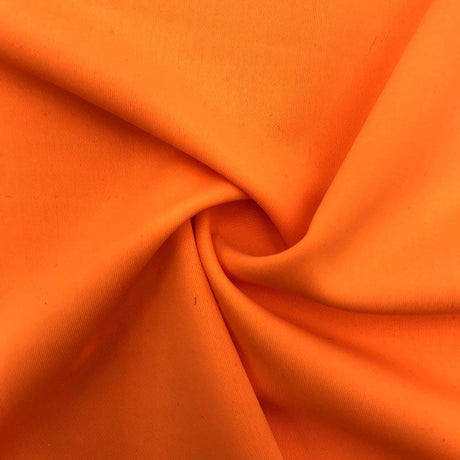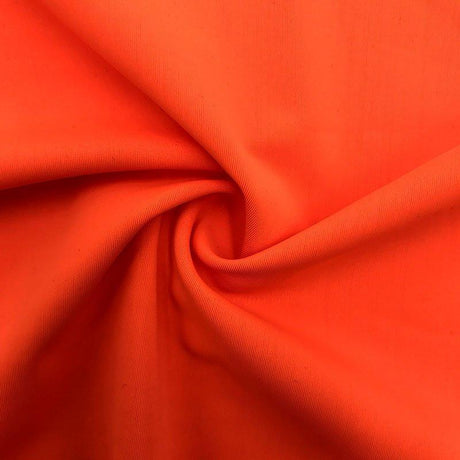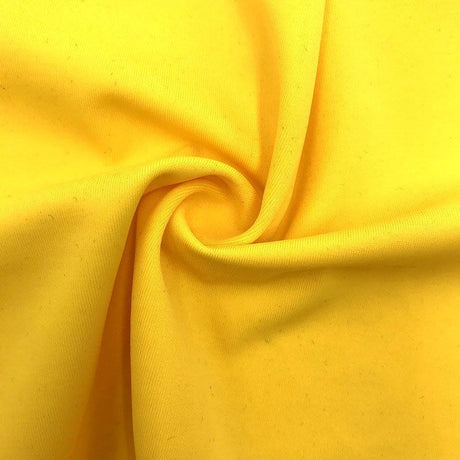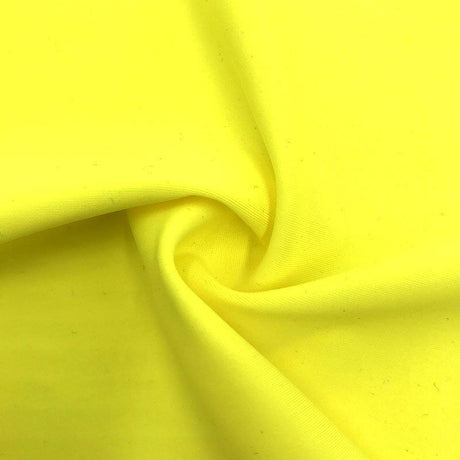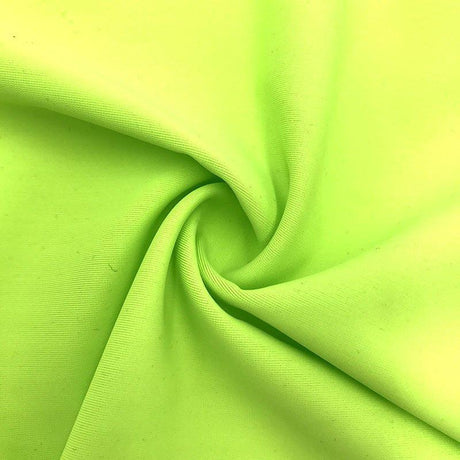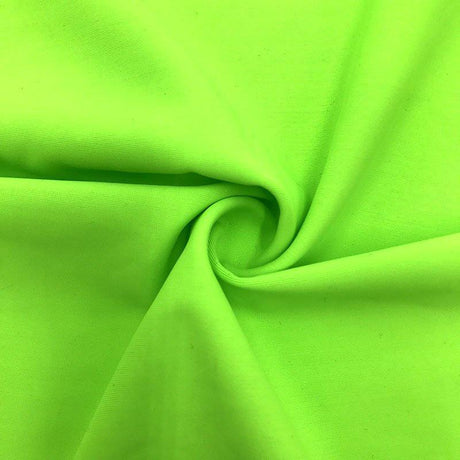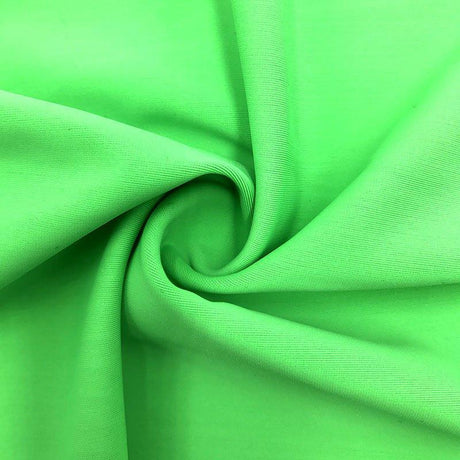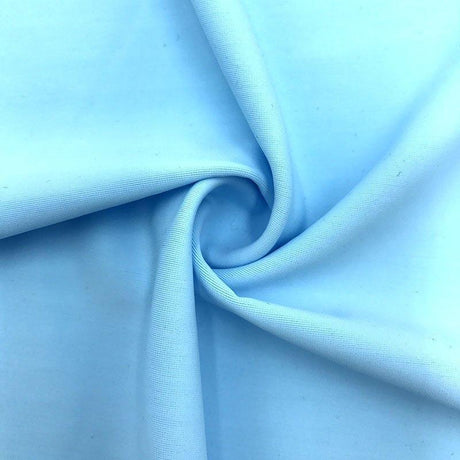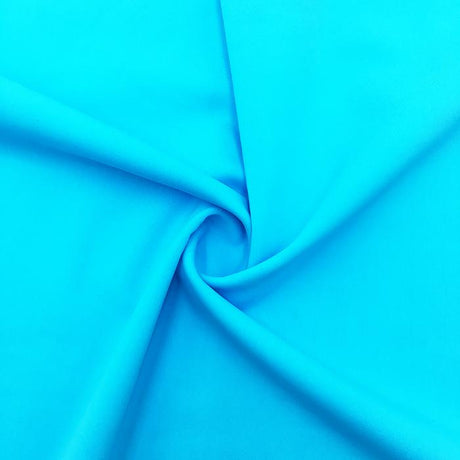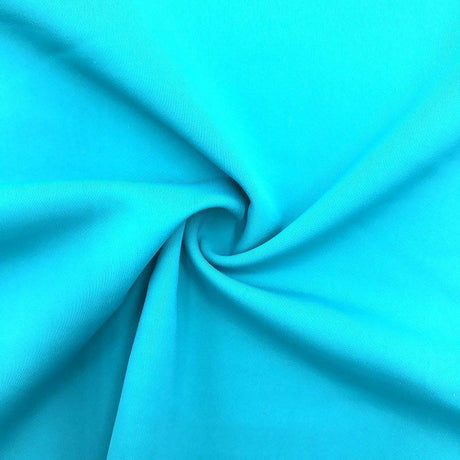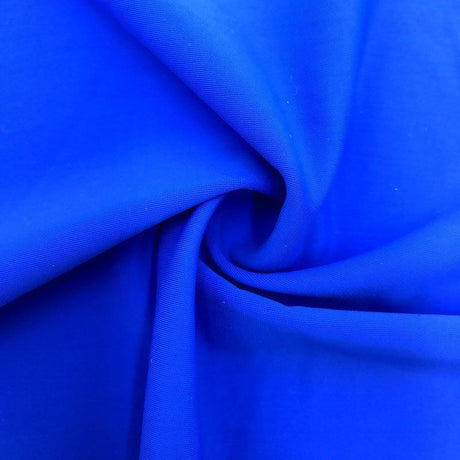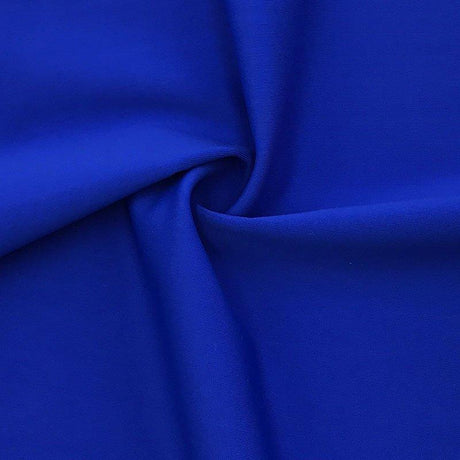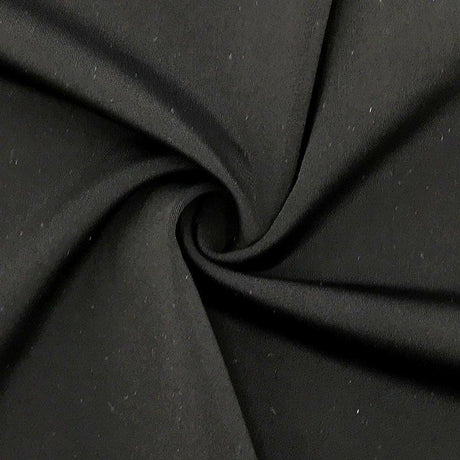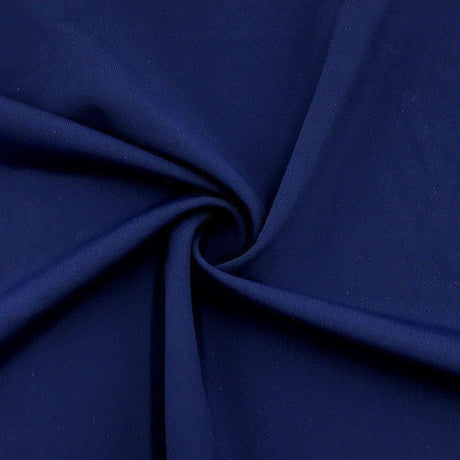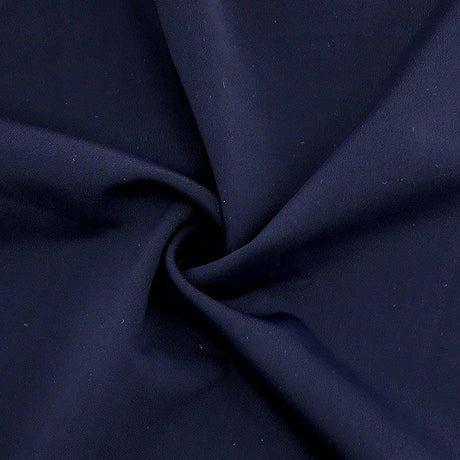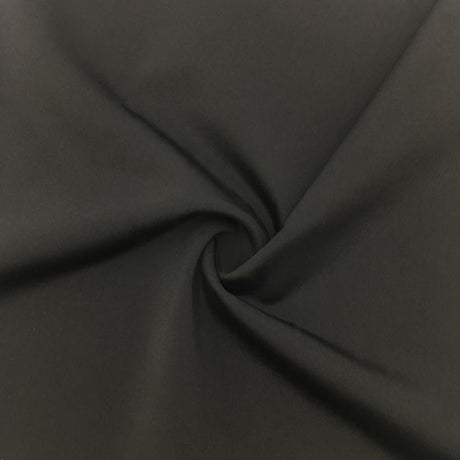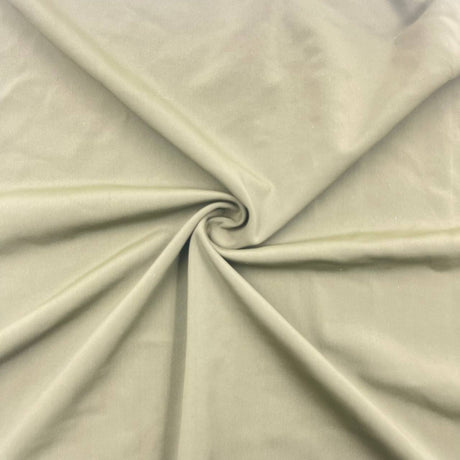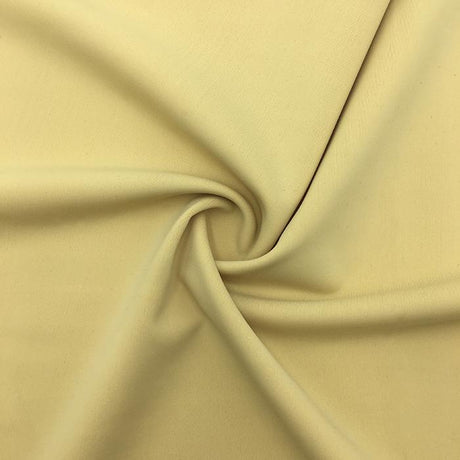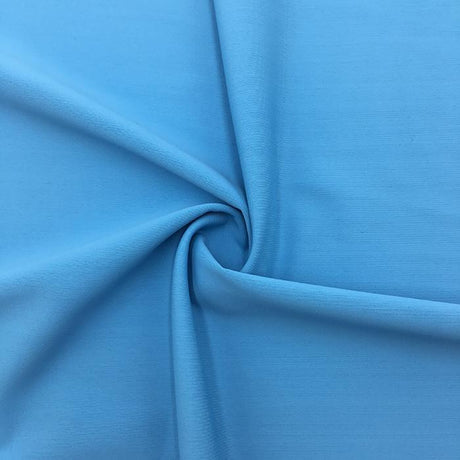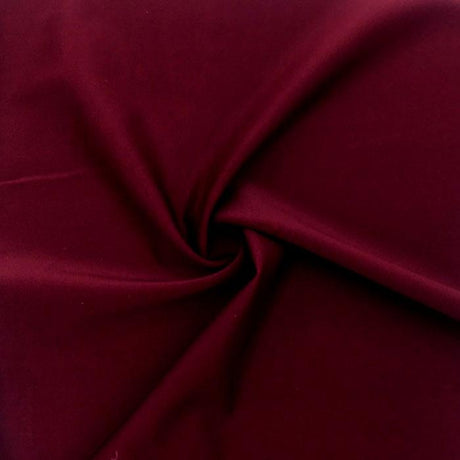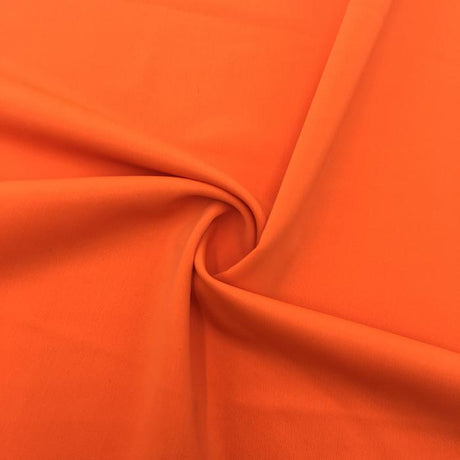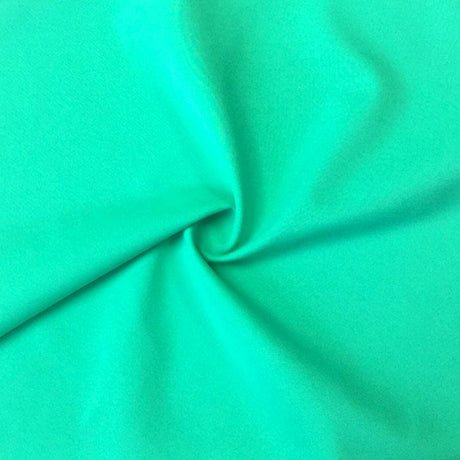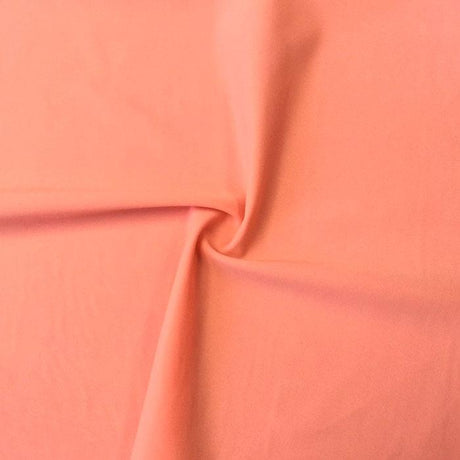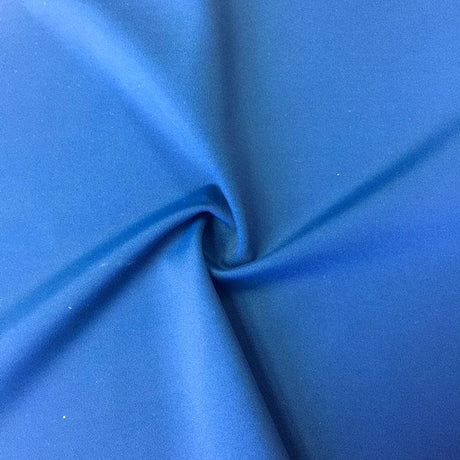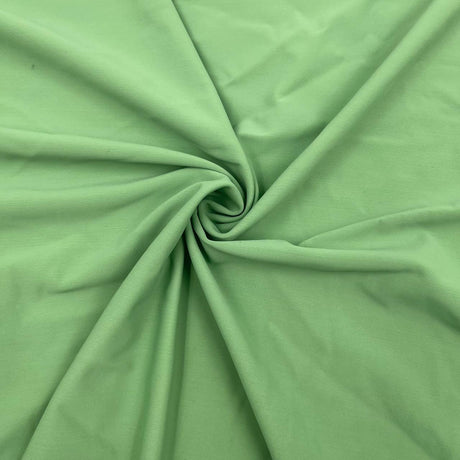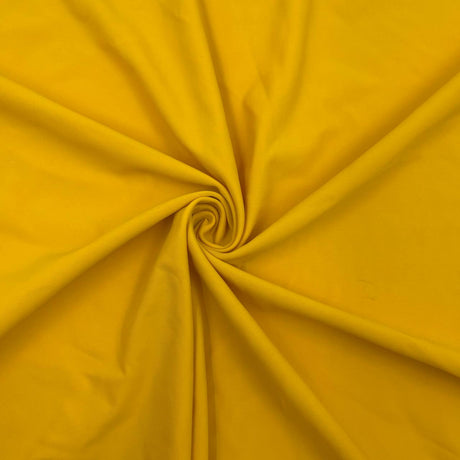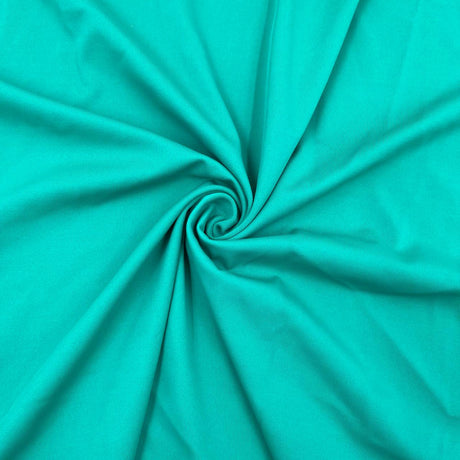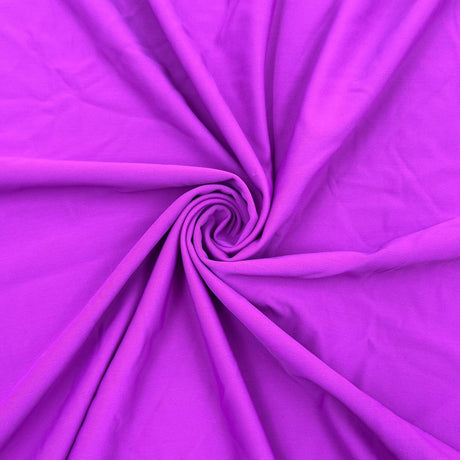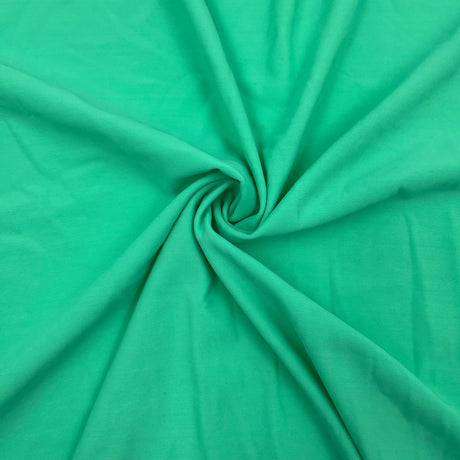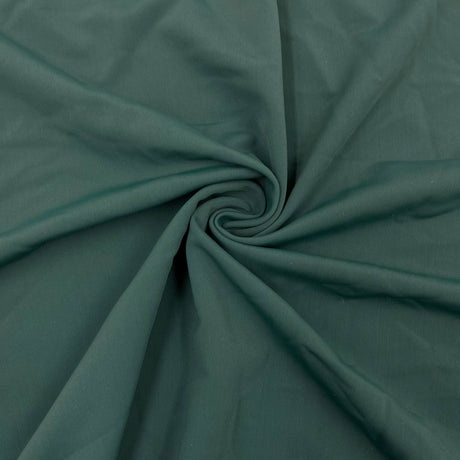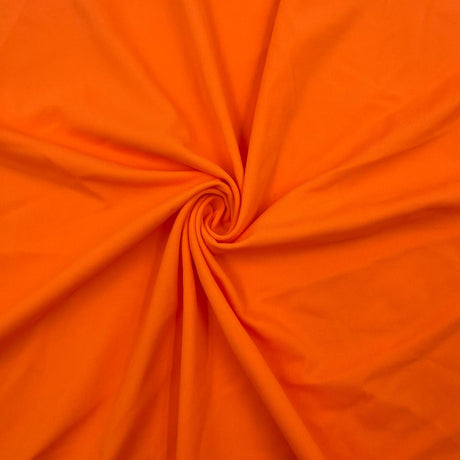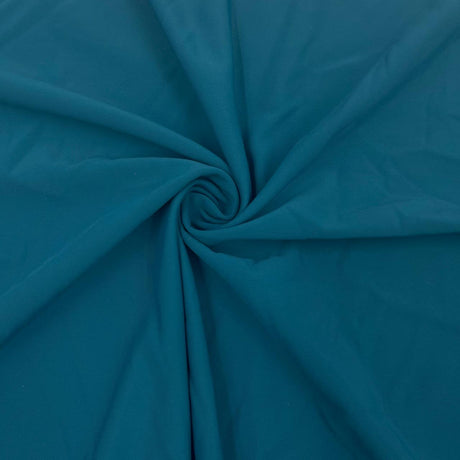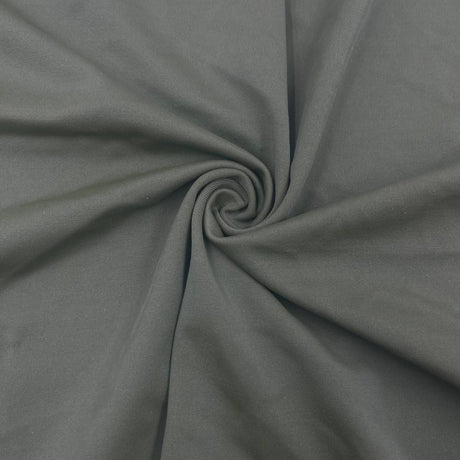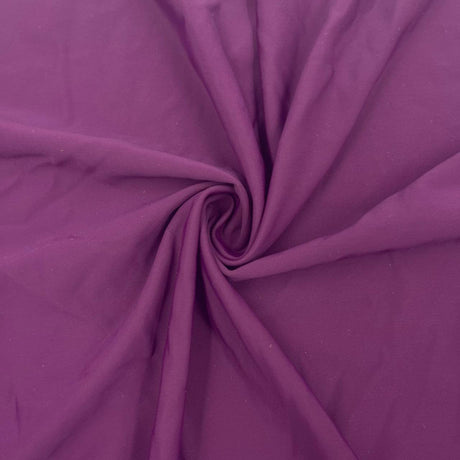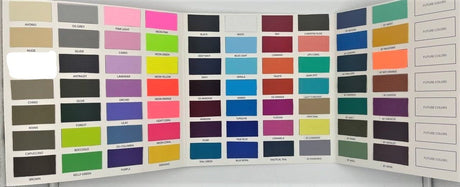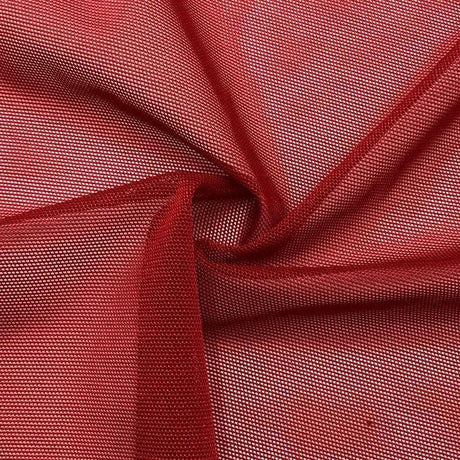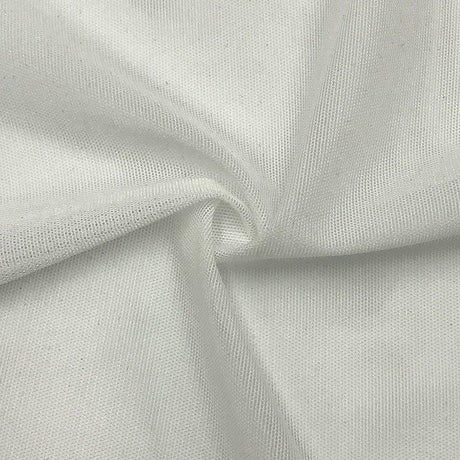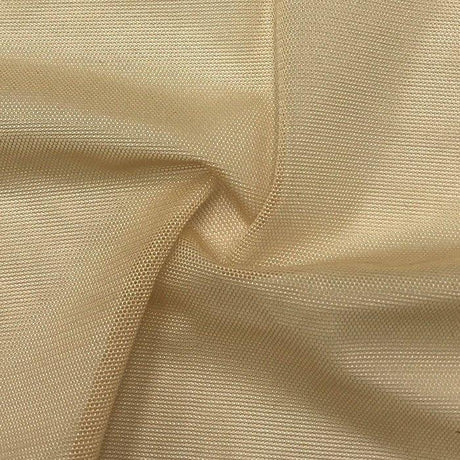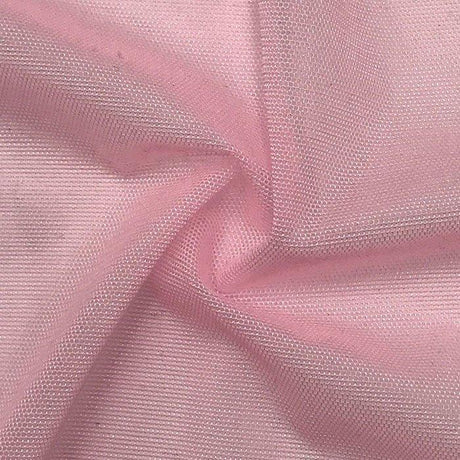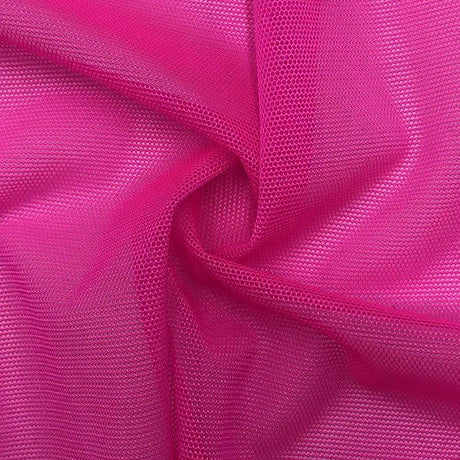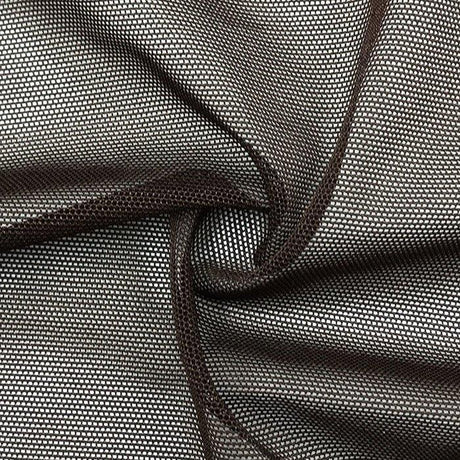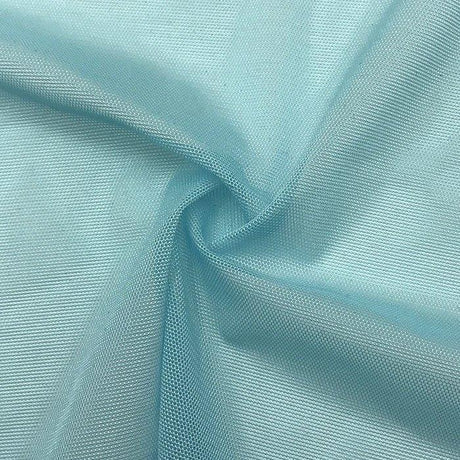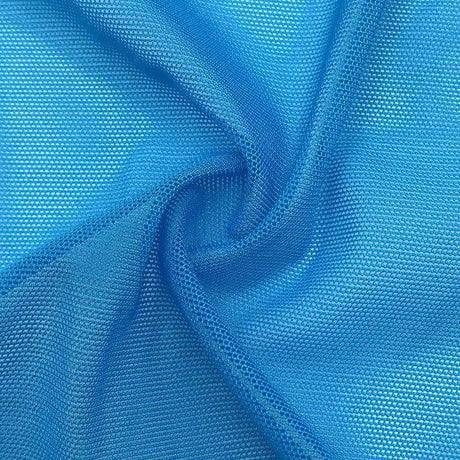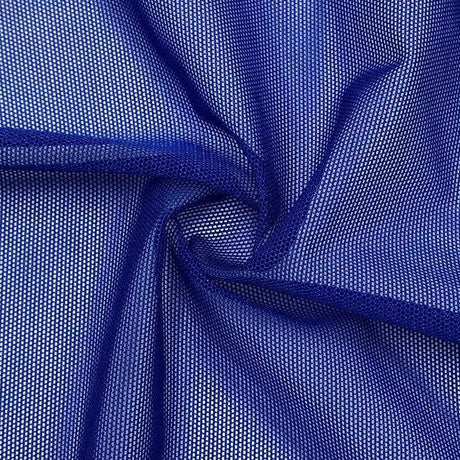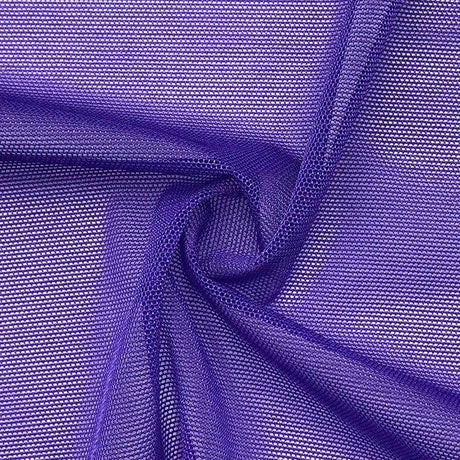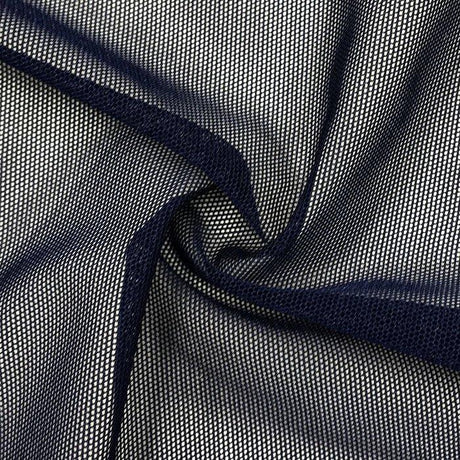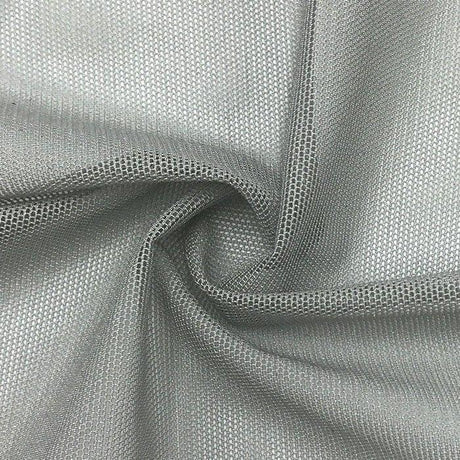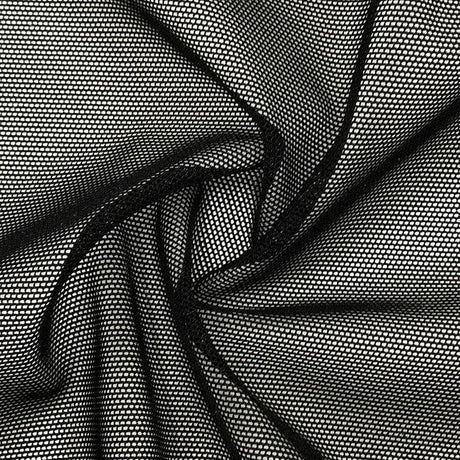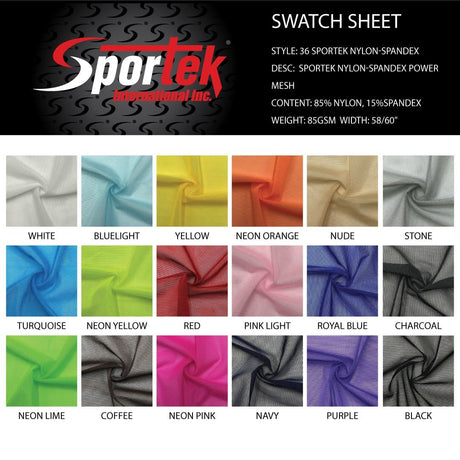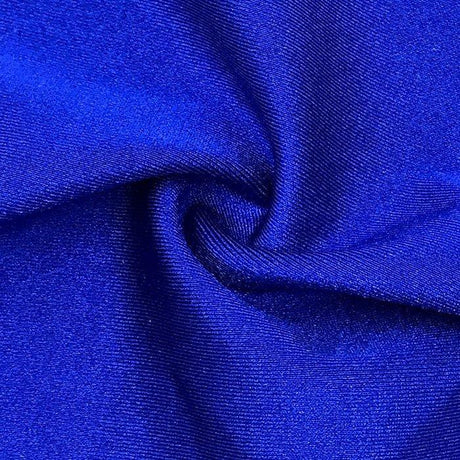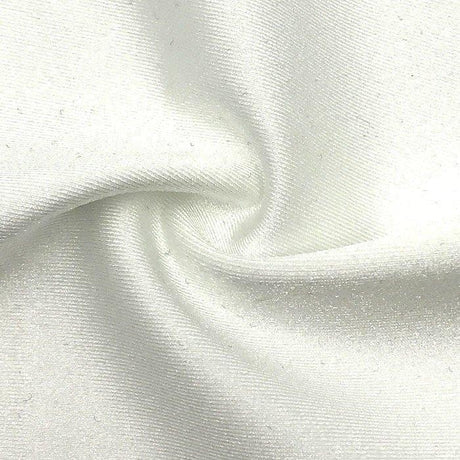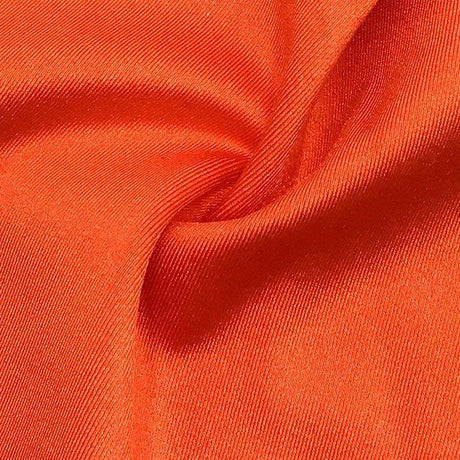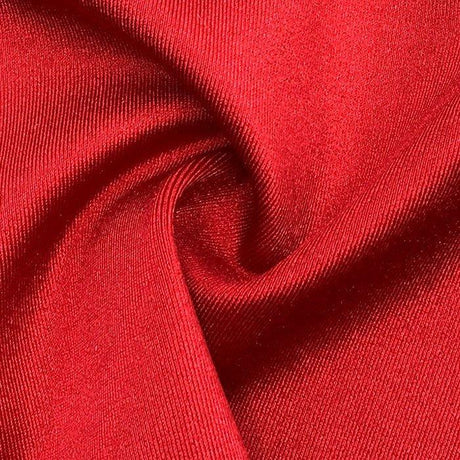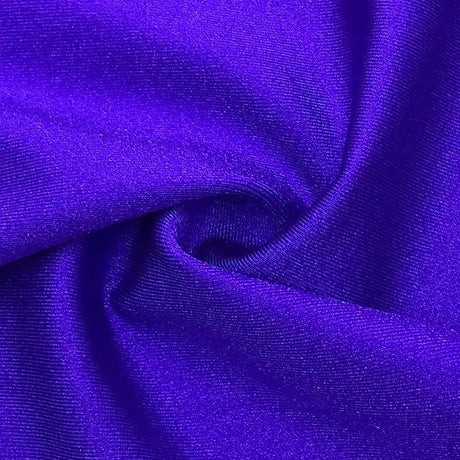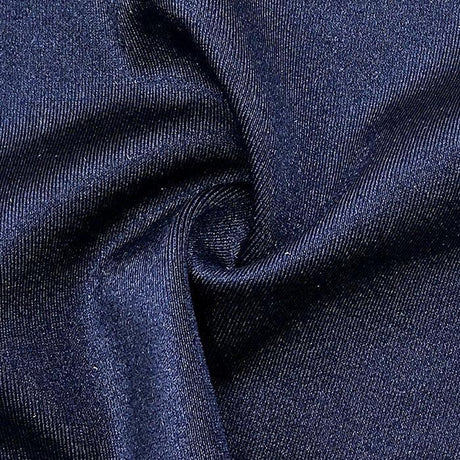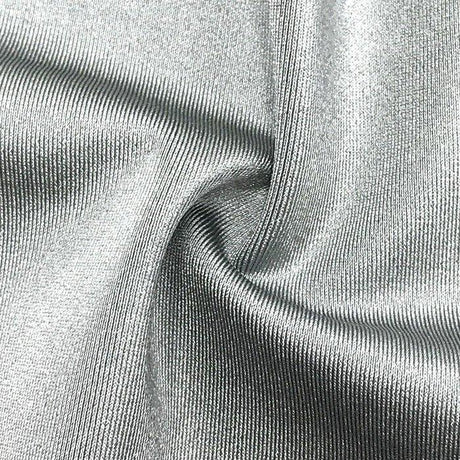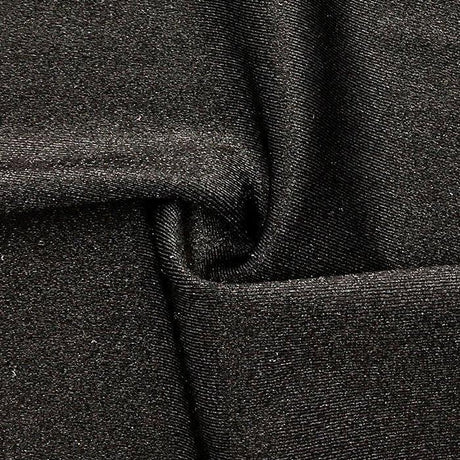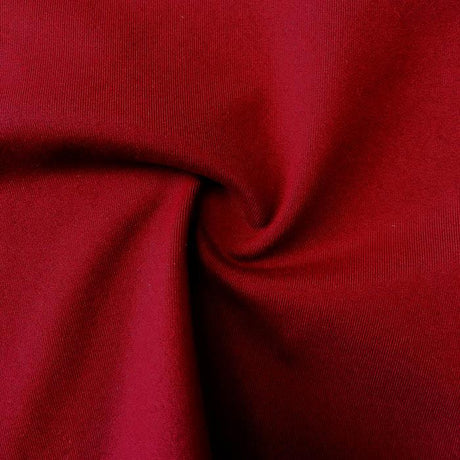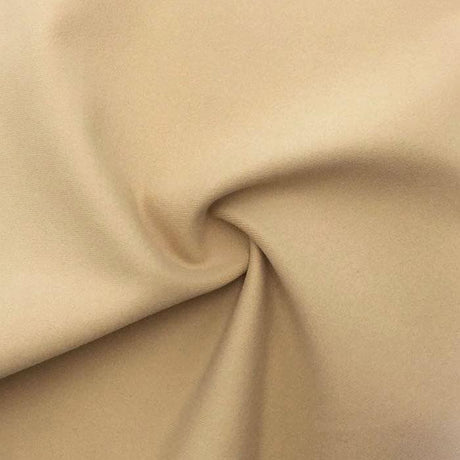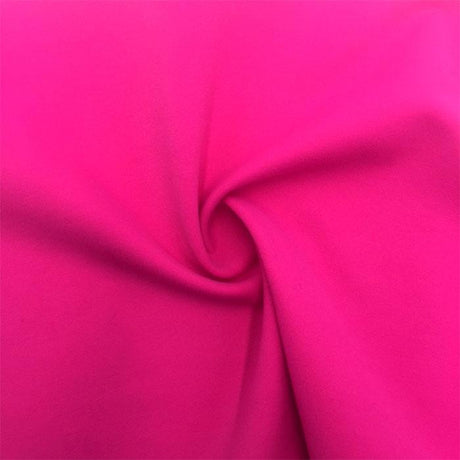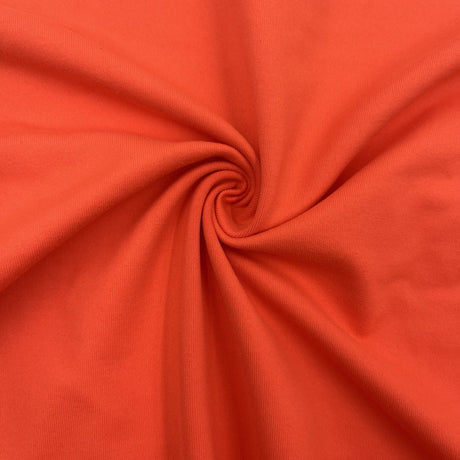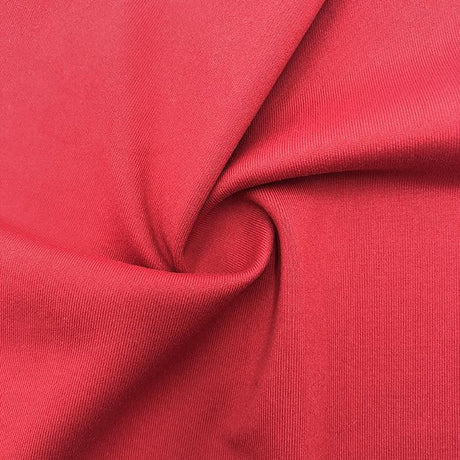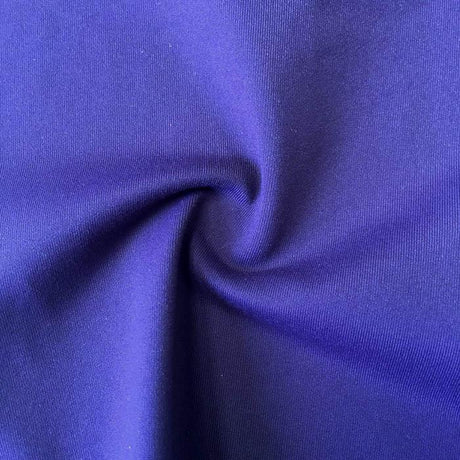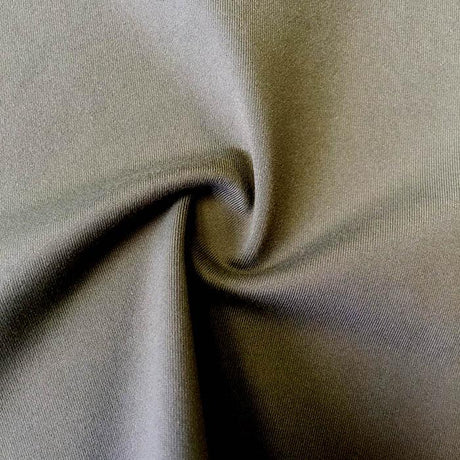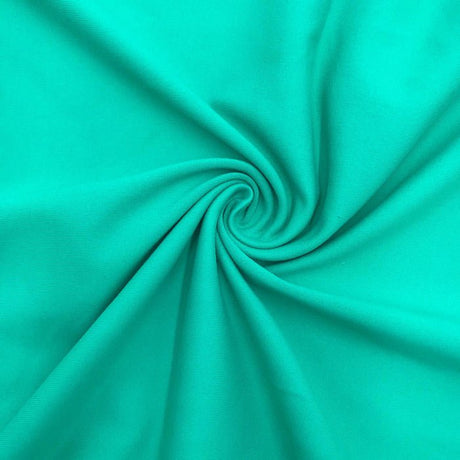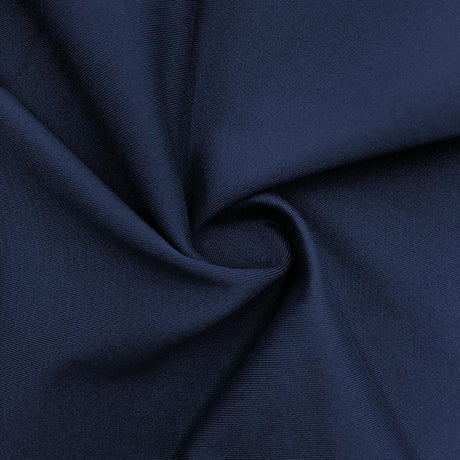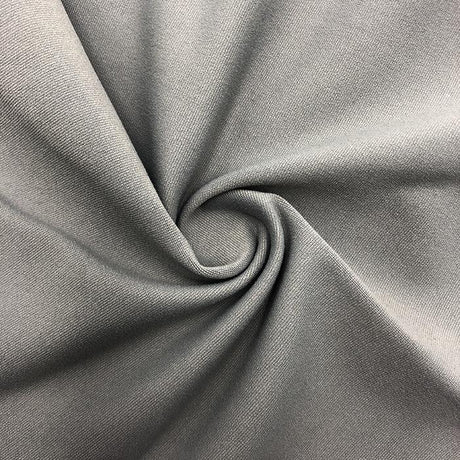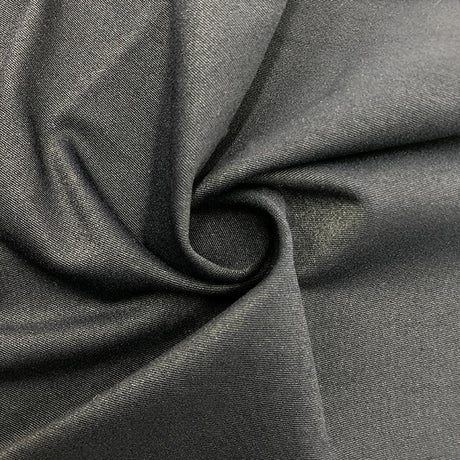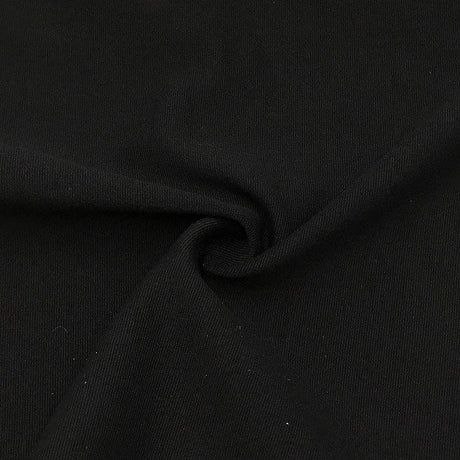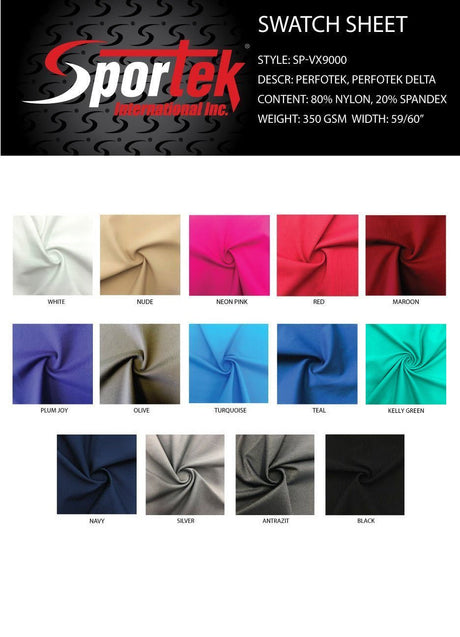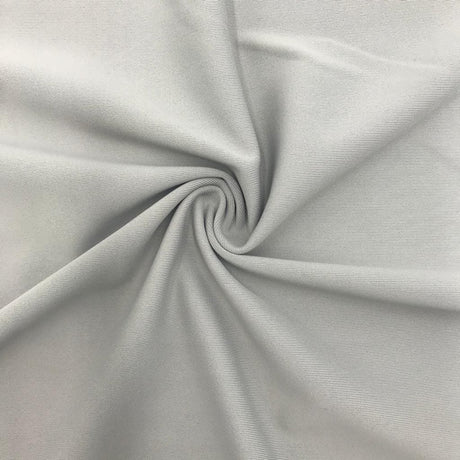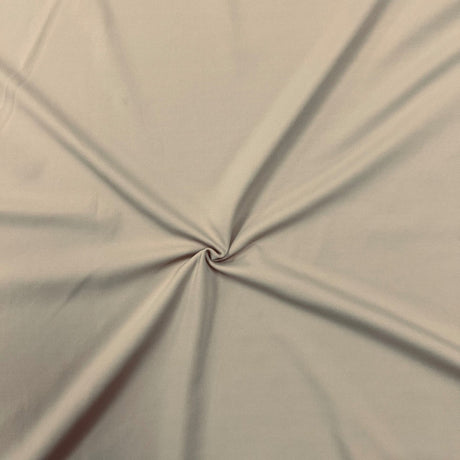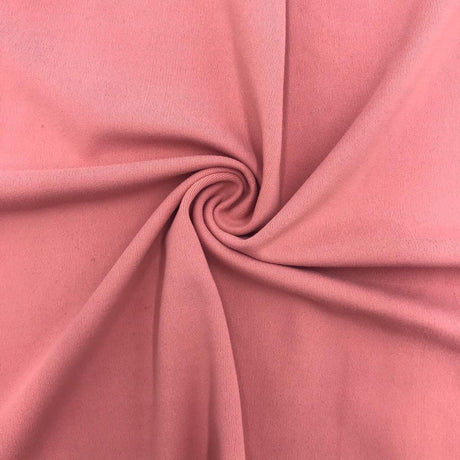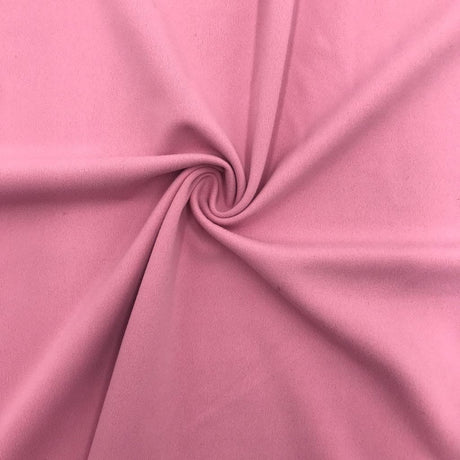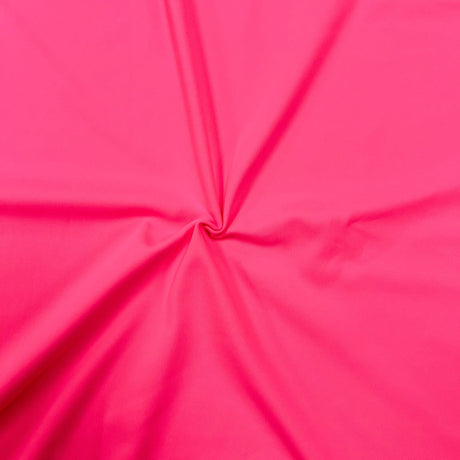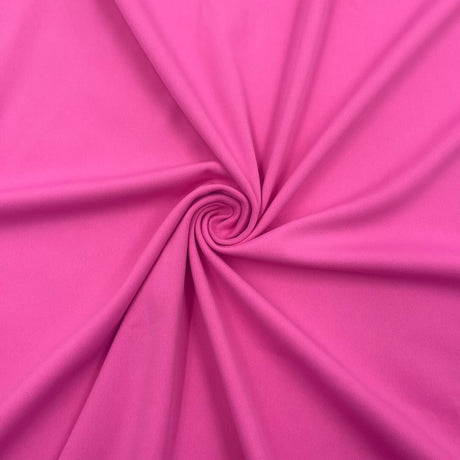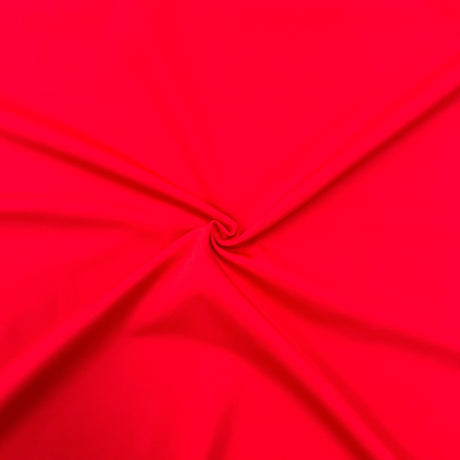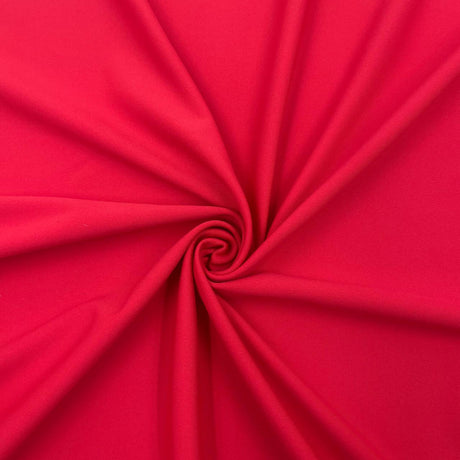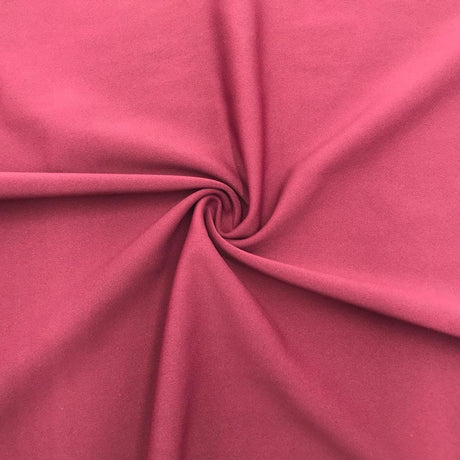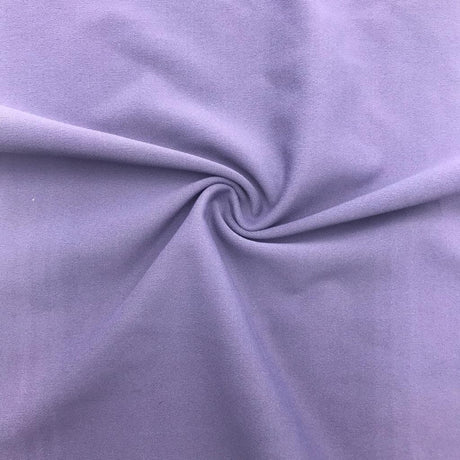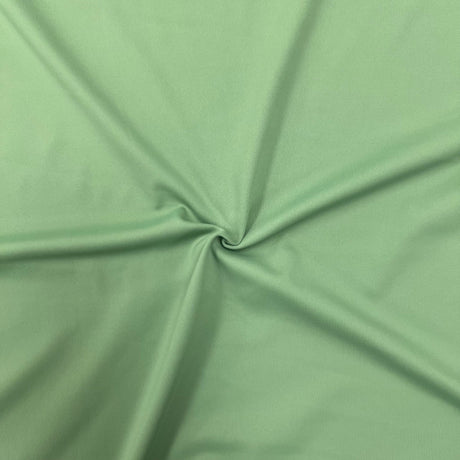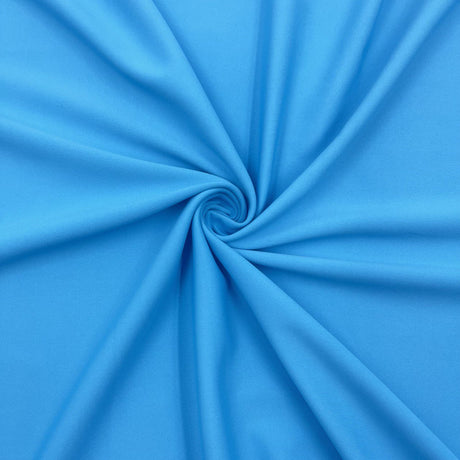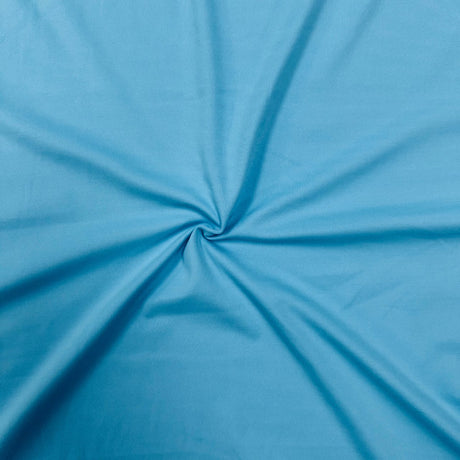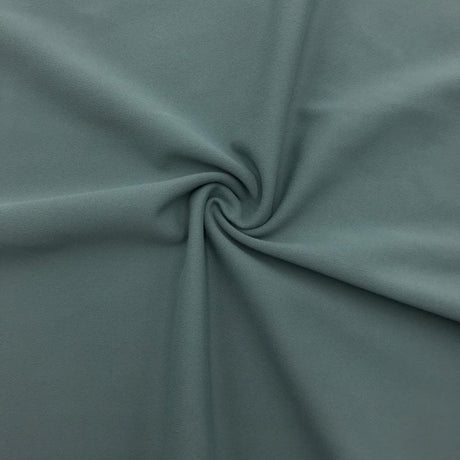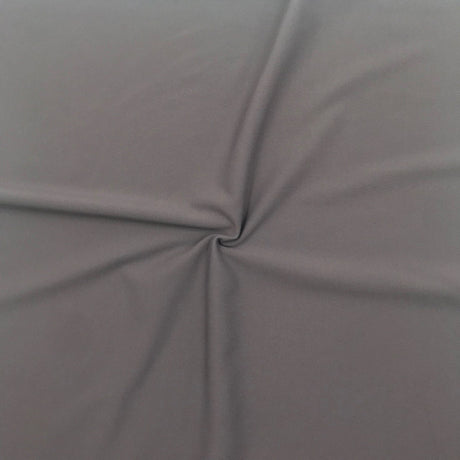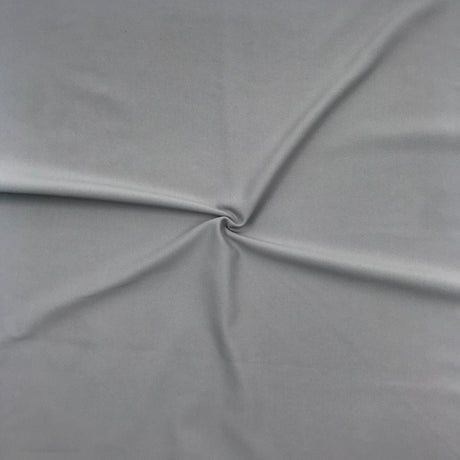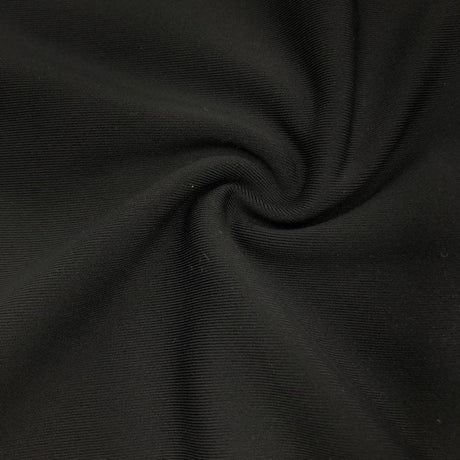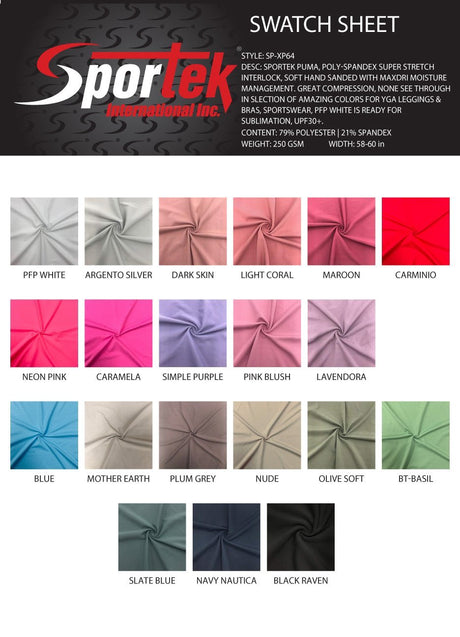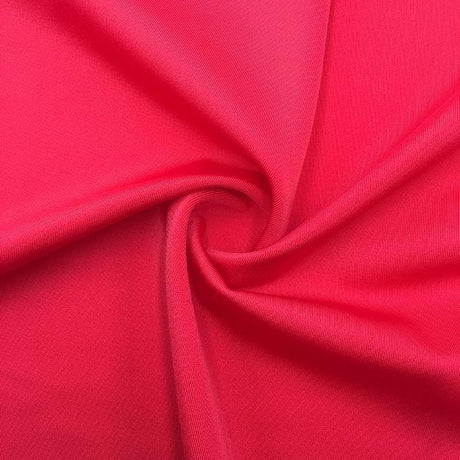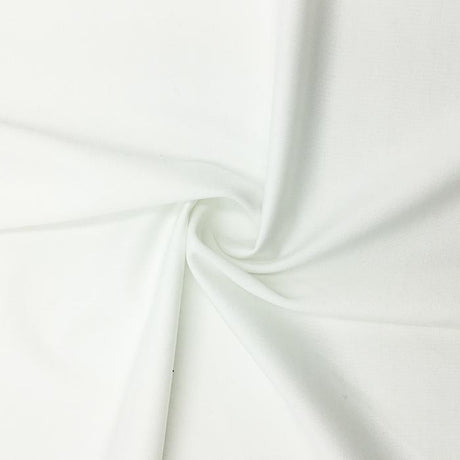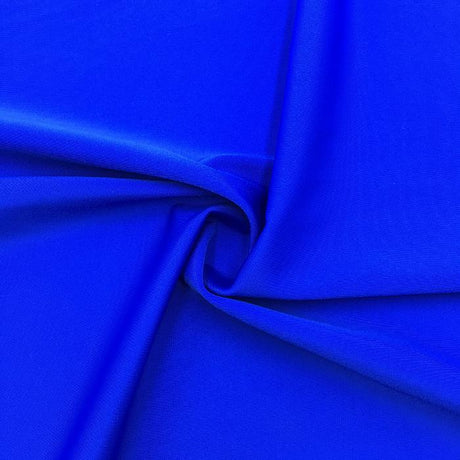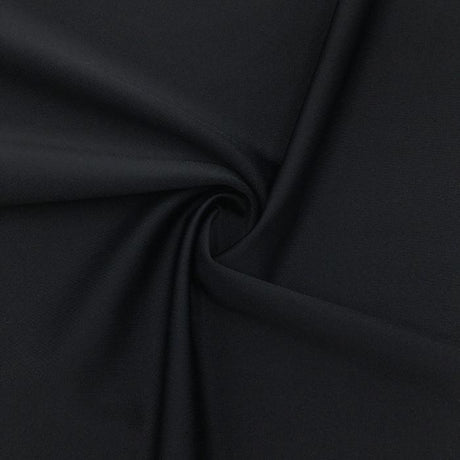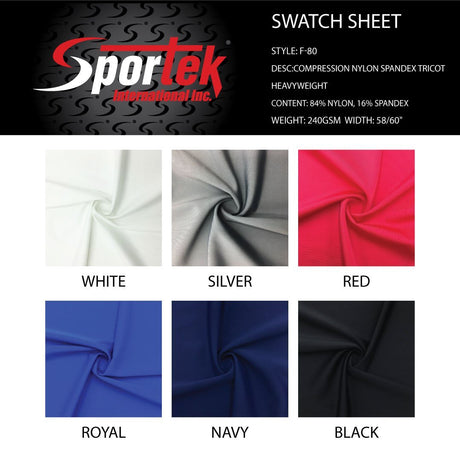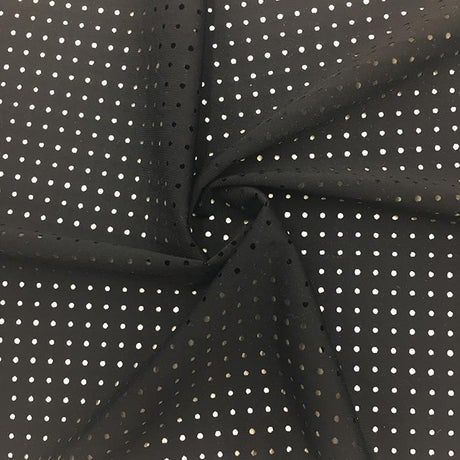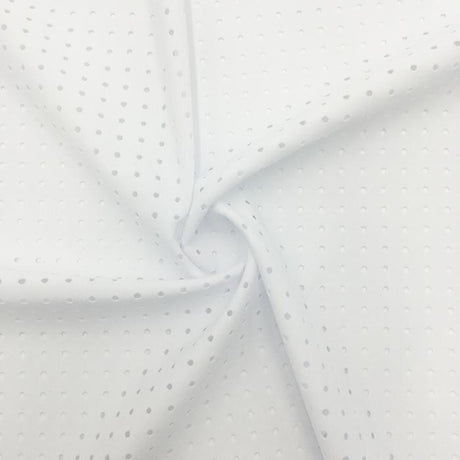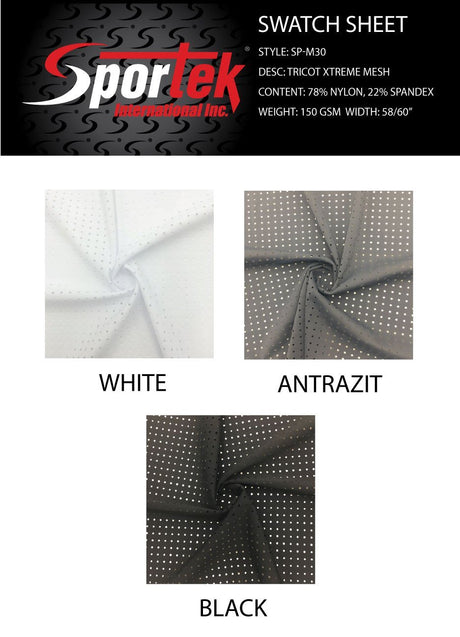Nylon spandex swimwear has become the dominant choice for bikinis, one-pieces, and even performance suits due to its unique combination of stretch, sheen, and strength. This fabric blend – typically a mix of nylon (polyamide) fibers and spandex (elastane) – offers exceptional elasticity, a smooth body-contouring fit, and the durability needed to withstand sun, salt, and pool chemicals. In this article, we’ll dive into what nylon-spandex fabric is, why it’s ideal for swimwear, and how to choose the right type for different needs. We’ll explore the technical properties of nylon and spandex, the effects of fiber ratios and knit construction, key performance attributes (from chlorine and UV resistance to moisture management), aesthetic qualities like sheen and softness, and practical guidance for designers and buyers. Whether you’re developing a swim line or sewing your own suit, understanding nylon spandex swimwear fabric will help ensure a comfortable, long-lasting, and high-performance garment.
What is Nylon-Spandex Fabric?
Nylon-spandex fabric (also known as a polyamide-elastane blend) is a textile that combines the strengths of two synthetic fibers: nylon (a type of polyamide) and spandex (also called elastane or Lycra®). Nylon by itself is a lightweight, strong fiber that is quick-drying and abrasion-resistant. It’s used in swimwear because it feels soft against the skin and has a bit of inherent stretch. Spandex is an elastic fiber famous for its ability to stretch dramatically and snap back to shape. When about 10–20% spandex is knitted together with nylon (around 80–90%), the result is a 4-way stretch fabric with optimal stretch and recovery, meaning it can move with the body and return to its original shape. This blend is the reason nylon spandex swimwear dominates the market – it delivers a form-fitting, comfortable fit that “hugs your body really well” while maintaining strength. In women’s fashion swimwear especially, nylon/spandex blends (often ~80/20) are by far the most common choice.
It’s worth noting that different terms might be used for these fibers in various regions or contexts. Nylon is a type of polyamide, so sometimes fabric content labels use “polyamide (PA)” – which is essentially the same thing as nylon. Likewise, spandex is the generic term in North America, while “elastane” is used in Europe; Lycra is a popular brand name for premium spandex fiber. No matter the name, the function is the same: the nylon provides a soft yet sturdy base, and the spandex provides superior elasticity to the swimwear fabric.
Properties of Nylon (Polyamide) and Spandex (Elastane)
Understanding the characteristics of each component fiber helps explain why their combination is so effective:
- Nylon (Polyamide): Nylon is a synthetic polymer known for its strength and durability relative to its weight. In swimwear, nylon fibers create a fabric that can withstand the stress of movement and contact with rough surfaces (like pool decks or sand) without tearing easily. Nylon is also soft and smooth to the touch, giving swimwear a comfortable feel against the skin. It absorbs less water than natural fibers (like cotton), so nylon dries fairly quickly; however, it does absorb a bit more water than polyester does. Pure nylon fabric tends to have some stretch (especially when knitted), but it’s not highly elastic on its own. It also has minimal UV protection inherently – a plain nylon swim fabric might only offer about UPF 5, meaning most UV rays pass through. To compensate, manufacturers use tight knit constructions and add UV stabilizers to nylon swim fabrics to achieve UPF 50+ protection for sun safety. In terms of chemical resistance, nylon is moderately resistant but not immune: chlorine in pool water will eventually degrade nylon, though not as quickly as it destroys spandex. Nylon is generally more chlorine-resistant than Lycra/spandex alone, but less so than polyester. Overall, nylon brings light weight, softness, quick-dry comfort, and decent strength to swimwear fabric.
- Spandex (Elastane): Spandex is a polyurethane-based elastic fiber celebrated for its extreme stretch and recovery capabilities. Spandex yarns can stretch 5–8 times their resting length and spring back to the original length without breaking. Even a relatively small percentage of spandex (e.g. 15–20%) embedded in a fabric gives that material significant elasticity and “bounce-back” recovery. In swimwear, the spandex is what allows a suit to contour to the body, providing a snug fit that moves with you like a second skin. It prevents the fabric from sagging or losing shape (at least while the spandex is intact). However, spandex is a delicate fiber in some respects – it is vulnerable to damage from chlorine, UV light, heat, and even body oils over time. Chlorine (from pools) is especially harsh: it oxidizes and breaks down spandex fibers, causing the suit to lose elasticity and become baggy if not a chlorine-resistant variant. UV rays and saltwater also gradually degrade spandex, which is why high-quality swimwear uses special treatments or higher grade elastanes (like Xtra Life Lycra or Creora® HighClo™) to improve chlorine and UV resistance. Spandex itself is always used in blend with other fibers (you rarely if ever see a 100% spandex fabric) because on its own it isn’t very strong and can even be transparent when wet. In sum, spandex contributes exceptional stretch, flexibility, and shape retention to swimwear, but it needs the support and coverage of fibers like nylon.
How Nylon and Spandex Work Together: In a nylon-spandex swim fabric, the nylon yarns provide a stable, smooth structure while the spandex yarns (often woven or knitted in as corespun or in specific rows) impart the needed elasticity. This pairing yields a fabric that is strong yet supple: it can handle being pulled and will snap back to fit “snug and comfortable” every time. The high stretch means a nylon-spandex swimsuit can accommodate body movements (swimming, diving, etc.) without restricting motion. And because of nylon’s soft hand feel, the suit feels gentle on the skin even when it’s tight. In practical terms, a well-made nylon-spandex swim fabric can stretch significantly (often it’s a 4-way stretch, meaning it stretches both widthwise and lengthwise) and then recover to avoid sagging. It’s also relatively lightweight in water, since neither nylon nor spandex holds much water. The result is a fabric that swimmers and beachgoers love for its comfort, fit, and resilience – truly a balance of “stretch, sheen, and strength.”
Why Nylon-Spandex Dominates Swimwear
Nylon-spandex has become the go-to material for most swimwear applications because it hits a sweet spot of comfort, aesthetics, and performance for the average user. Here are some key reasons it’s the dominant choice:
- Superior Stretch and Fit: As discussed, the blend of ~80% nylon with ~20% spandex gives excellent elasticity. Swimwear made from this fabric clings to the body and “hugs your body really well”, which is essential for both style and function. A form-fitting suit is more hydrodynamic in water and more flattering on land. Nylon-spandex fabrics have a natural give that allows everything from lounging on the beach to competitive swimming with equal comfort. Unlike rigid fabrics, it won’t bag out or restrict movement at the shoulders, hips, or knees. This flexible fit has made nylon-spandex popular in everything from fashion bikinis to athletic one-pieces.
- Softness and Comfort: Nylon has a soft, smooth texture, far gentler on skin than old-fashioned swim materials (for example, 100% polyesters of the past could feel rough). The smooth surface of a nylon-spandex knit is often described as silky. This makes swimsuits comfortable for extended wear – you can swim, sunbathe, or play beach volleyball without feeling scratchy or chafed. The material also breathes reasonably well for a synthetic; the knit structure allows some air circulation when the suit is dry, so it’s not overly clammy. Many users simply find that nylon-spandex suits “feel soft against the skin”, which is a big reason they dominate the swimwear market.
- Quick Drying and Lightweight: Both nylon and spandex do not absorb much water, so suits made from them tend to dry quickly once out of the water. Nylon-spandex fabrics also remain relatively light when wet – they won’t waterlog and drag you down like cotton would. (Pure nylon absorbs some moisture, but modern blends sometimes include water-repellent treatments or mixed fibers to reduce this.) For the wearer, this means you won’t stay soaking wet for long after a swim, and the suit won’t feel heavy in the water. Quick-dry capability is a practical advantage that keeps nylon-spandex at the forefront for swim attire.
- Aesthetic Versatility: Nylon-spandex fabrics have a naturally lustrous sheen that many swimwear designers and consumers find attractive. The slight shine of a classic tricot bikini, for example, catches the light and accentuates body lines. This blend also takes dye very well, yielding vibrant solid colors. Although printing on nylon (with sublimation or other methods) is more challenging than on polyester, many nylon-spandex swim fabrics come in rich solid hues or knit-in textures. The material can also be finished in different ways – from high-gloss “satin” finishes to matte, from smooth to ribbed – giving designers lots of creative latitude. We’ll discuss sheen and finish more in a later section, but suffice to say nylon-spandex can achieve the sleek, fashion-forward look that modern swimwear demands. It’s the fabric behind countless bold prints, neon colors, and elegant classics on the beach each season.
- Balanced Performance: While not the absolute most chlorine-proof or UV-proof material (polyester would win on that front), a good nylon-spandex swim fabric is adequately durable for typical use. Recreational swimmers and beach enthusiasts generally get plenty of wear out of nylon-blend suits as long as they rinse them and avoid long soaks in heavily chlorinated pools. The material’s performance is “good enough” for the average consumer, especially given how comfortable and flattering it is. Competitive swimmers might opt for specialized fabrics (we’ll cover that), but for the majority of swimwear sold (fashion, casual, leisure use), nylon-spandex hits the mark of being strong yet luxurious. As one guide notes, these blends are “soft and comfortable with a good stretch”, making them ideal for most female swimwear pieces. In short, nylon-spandex became dominant by offering a great all-around package – the stretch and comfort are top-notch, and the durability is sufficient when the suit is cared for.
Finally, historical context has a role: the invention of Lycra (spandex) in the mid-20th century revolutionized swimwear, allowing for figure-hugging designs that weren’t possible with earlier fabrics like cotton or wool. Nylon-spandex suits replaced those old materials almost entirely for swimming because they were so vastly superior in performance and comfort. Today, when you pick up almost any swimsuit, you’ll find a tag that says something like “80% Nylon, 20% Spandex”, confirming that this combo remains the industry standard.
(Note: Polyester-spandex blends are also used in swimwear, especially for competitive or printed swimsuits. Polyester offers better chlorine and UV resistance, which is why you’ll find poly blends in many racing swimsuits. However, polyester lacks the natural softness of nylon. For the scope of this article, we focus on nylon-spandex, but will mention polyester where relevant for comparison.)
Fiber Content Ratios and Fabric Construction
Not all nylon-spandex swim fabrics are identical. Variations in the fiber content ratio (nylon percentage vs spandex percentage) and in the knitting construction can lead to differences in stretch, support, and feel. Here’s what to know:
- Common Fiber Ratios (80/20, 85/15, etc.): The classic blend is around 80% nylon, 20% spandex, but you will also see 85/15, 75/25, 90/10, and other combinations. The percentage of spandex largely determines the stretchiness: a fabric with 20% spandex will generally be more stretchy (and have more elastic “snap” in recovery) than one with only 10–15% spandex. As a rule of thumb, more elastane = more flexibility. For example, 80/20 (a typical bikini fabric) will have greater stretch than 85/15 if all else is equal. High-fashion swimwear or designs that require a lot of drape and movement might use 20–25% spandex for maximum flexibility. On the other hand, reducing the spandex content can increase a fabric’s stability and resistance to sagging (and sometimes improve chlorine/UV longevity). Competitive swimwear or very structured styles might use blends like 85/15 or even 90/10 to get a slightly firmer, “tighter” textile that still stretches but also provides compression. One example is certain textured ribbed swim fabrics – some are made with about 92% nylon and 8% spandex, making them very compact, tight, and supportive with less overall stretch. This can give a sporty, compressive feel which is sometimes desired for a secure fit. In contrast, a standard 80/20 fabric has a more yielding stretch, often described as a typical “fashion look” stretch.
- It’s important to note that numbers don’t tell the whole story – the knit technique and quality of the yarns also affect the stretch. A 80/20 blend from one manufacturer could feel less stretchy than a 85/15 from another, due to differences in knitting or spandex quality. That’s why experts recommend getting swatches and feeling the fabric if possible, rather than relying purely on the listed ratio. However, as a general guide, 15–25% spandex is considered optimal for swimwear: enough to ensure excellent stretch and recovery, but not so much that the garment becomes overly delicate or prone to UV damage. Going above 25% spandex is rarely needed and can actually reduce durability in swim fabrics.
- Warp Knit Tricot vs. Circular Knit: The majority of high-quality swimwear fabrics are made using a warp knitting process, producing what’s known as tricot knit. Tricot is a type of knit that interloops yarns in a zigzag pattern along the length of the fabric, making it run-resistant (it doesn’t snag and unravel like hosiery) and very stable in all directions. A nylon-spandex tricot has a smooth, flat surface on the face and a subtle texture on the back, and it offers consistent 4-way stretch and excellent recovery. Tricot is favored for swimwear because of its durability and elasticity – it holds its shape and withstands tension without running. Many well-known swim fabric brands (like Carvico Vita, etc.) are warp-knit tricots in an ~80/20 blend.
- Circular knit (weft knit) fabrics can also be used for swim, though less commonly for the primary fabric. Circular knits (like a standard jersey) tend to have a smoother front and back and can be very stretchy as well, but they might be a bit more prone to running or distortion under stress. Some designers do use circular knit nylon-spandex (especially if aiming for a specific print or a softer drape), and if the knit is tight and of high quality, it can meet swimwear requirements (one sewer noted that a lightweight nylon/spandex circular knit “meets the requirements for a swim fabric” in terms of stretch and fiber content). However, generally tricot is the gold standard for swimwear fabric construction. It yields a fabric that lies flat, stretches uniformly, and recovers well without curling edges – all useful properties when cutting and sewing swimsuits. Tricots also often have four-way stretch, meaning they stretch both widthwise and lengthwise significantly, whereas some cheaper circular knits might only have two-way stretch (significant in one direction). For swimwear, always ensure the fabric has true 4-way stretch so it can handle movement and fit the body’s curves in every direction.
- Fabric Weight (GSM): The weight or thickness of the swim fabric, measured in grams per square meter (g/m²), affects its suitability for different purposes. Most fashion swimwear fabrics weigh around 180–200 g/m², which is a medium-weight that balances coverage and stretch. At this weight, the fabric is not see-through, has a good snug feel, but isn’t too heavy to be hot or restrictive. If you go lighter – for instance, some fabrics are ~150 g/m² – the material will feel more like lingerie or underwear, very lightweight and possibly a bit flimsy for swimwear. Ultra-light fabrics may also dry quickly, but they risk being semi-transparent when wet or not providing enough support. On the flip side, heavier fabrics in the 200–220+ g/m² range are often used for competitive swimwear or specialty designs. Heavier, dense knits can offer more compression (supporting muscles, shaping the body) and can be more durable long-term (more fiber content to wear out). They may also be used for textured swim fabrics (like thick ribbed or jacquard knits). The trade-off is that very heavy swim fabrics might feel more restrictive and take a bit longer to dry. Designers typically choose weights in the standard range for bikinis and one-pieces, while heavier weights might be reserved for high-performance suits or structured styles. Knowing the GSM of a fabric can help in choosing a lining (often linings are lighter weight, around 100–150 g/m², to avoid adding too much bulk). It’s also a factor in dry vs wet behavior – lighter fabrics hold less water and may feel “floaty,” whereas denser fabrics might feel more solid but could trap a bit more water before drying.
In summary, the composition (nylon vs spandex ratio) and construction (knit type and weight) will affect how a nylon-spandex swim fabric performs. An 80/20 warp-knit tricot of ~190 gsm is an excellent all-purpose choice for most swimwear – it gives 4-way stretch, softness, and sufficient coverage. If more compression or durability is needed, one might choose an 85/15 blend or a heavier, tightly knitted fabric. And if a particularly slinky or lightweight effect is desired, a higher spandex content or lighter knit could be used, but with the understanding that it might sacrifice some longevity or support. Always ensure the fabric is labeled for swimwear, meaning it’s chlorine-tested and UV-tested, and has the needed stretch percentage (usually at least 50% stretch in both directions). Good suppliers will provide these specs, and it’s wise to feel a swatch to judge qualities like hand feel and stretch recovery before committing to a fabric for your swimwear project.
Performance Attributes of Nylon-Spandex Swimwear
A great swimsuit isn’t just about stretch and softness – it also needs to endure harsh conditions. Consider the key performance attributes below when evaluating nylon spandex fabrics for swimwear:
- Chlorine Resistance: Chlorine from swimming pools is one of the most damaging elements for swimwear. Nylon-spandex blends have moderate chlorine resistance – better than untreated spandex alone, but not as high as polyester blends. In a typical 80/20 nylon-spandex suit, the spandex is the first to degrade in chlorinated water (chlorine literally breaks the elastic fibers’ molecular bonds), which leads to that dreaded “baggy” swimsuit feeling after continuous pool use. Nylon itself also weakens over time with chlorine exposure, though at a slower rate than spandex. One guide notes that a 100% Lycra (spandex) suit might start sagging in weeks, whereas a 100% polyester suit can last 3-4 times longer under heavy chlorine use. Nylon sits in between. For occasional pool use or recreational swimming, a nylon-spandex swimsuit should hold up fine, especially if you rinse it after each use. But for daily lap swimming in a chlorinated pool, the fabric will wear out comparatively faster. Some nylon-spandex fabrics are now made with chlorine-resistant spandex (like Creora® HighClo™ or Lycra® Xtra Life) which significantly improves their lifespan in pools. These are a great choice if you want the comfort of nylon-spandex but need extra chlorine durability. In summary, standard nylon-spandex is “moderate” in chlorine tolerance – suitable for beach and occasional pool wear – and you can extend its life by rinsing in cool water after swimming and not leaving it to dry with chlorinated water on it. For high-chlorine environments, look for fabrics labeled chlorine-resistant or consider higher polyester content.
- UV Resistance: Constant sun exposure (UV radiation) can also degrade fibers and fade colors. Pure nylon has only minimal inherent UV blocking (unlike polyester which naturally has a bit more). Thus, many nylon spandex swimwear fabrics rely on additives or special knit structures to achieve high UV resistance. You’ll often see swim fabrics advertised as UPF 50+, meaning they block 98% of UV rays – this is achieved by using UV absorbent treatments or tight, dense knitting so that UV can’t penetrate easily. The spandex component, unfortunately, is also sensitive to UV over time (UV can make elastic fibers become brittle). This means a swimsuit left to dry in direct sunlight every day will age faster (losing elasticity and color). To maximize UV resistance, many nylon-spandex fabrics are solution-dyed in darker colors or have UV inhibitors. From a performance standpoint, a good nylon-spandex fabric can indeed be UV protective (check for a UPF rating from the manufacturer). Many are rated UPF 50+. Just remember that lighter colors or very sheer fabrics will offer less protection, and that UV exposure, like chlorine, contributes to slow degradation of the material. In practice, nylon-spandex suits provide adequate sun protection for the covered areas (especially if rated UPF50), and the fabric will last many beach trips – but extremely prolonged sun exposure will eventually cause some weakening, so again, rinsing and drying in shade will help. If UV protection is a priority (say, for a surf rashguard or kids’ swimwear), look for fabrics specifically noting high UPF or consider polyester blends which inherently start at a higher UPF (nylon ~UPF 5 vs poly ~UPF 15 without treatment).
- Saltwater and Sea Durability: Saltwater is less chemically reactive than chlorine, but it can still affect swimwear. Salt can crystallize in fabric fibers and cause abrasion or a slight deterioration in elasticity if not rinsed out. A nylon-spandex suit generally holds up well in the ocean – nylon has good resistance to salt and doesn’t corrode, and many swimsuits are advertised as safe for both pool and ocean use. However, extended exposure to salt can dry the fibers out or make them feel less supple, and salt residues can attract moisture or cause minor discoloration. The main advice is to rinse swimwear in fresh water after using in the ocean (just as with pool use). This prevents salt crystals from staying in the fabric. Nylon-spandex itself is not significantly weakened by salt on a chemical level (some guides even say nylon is “resistant to saltwater”), but salt can accelerate wear by abrasion. Also, ocean environments usually mean more UV exposure, sand abrasion, and exposure to sunscreen oils – all of which can factor into durability. The good news is nylon has excellent abrasion resistance (one reason it’s used for outdoors gear), so it stands up to sand rubbing and rocks better than many fabrics. Overall, a high-quality nylon-spandex swim fabric will perform well in saltwater, maintaining color and stretch provided you give it a rinse afterwards. It’s well-suited for beach use, surfing, snorkeling, etc., with no special modifications needed (unlike natural fibers which can get very stressed by salt).
- Breathability: When it comes to breathability, synthetic swim fabrics are generally less breathable when dry than natural fibers like cotton, but their thin knit structure still allows some air flow. Nylon-spandex fabric is designed to be snug, which inherently limits how much air can circulate next to the skin. However, because the fabric doesn’t trap much moisture, it doesn’t create as much of a clammy feeling as, say, a wet cotton garment would. In hot weather out of the water, a swimwear fabric can feel warm, but many wearers find it breathable enough for lounging—especially since swimwear fits skimpier and exposes more skin to open air (which helps with cooling). Some nylon blends are engineered to have slightly better breathability or a “cooling” touch (for instance, there are new fabrics that claim enhanced ventilation). But in general, expect moderate breathability: sufficient for comfort in the sun, as long as you’re not wearing a full-coverage suit on land for long periods. One advantage is that nylon does absorb a small amount of sweat (more than polyester), which can help with moisture management – it won’t feel as sticky as polyester can when you sweat, because it can wick a bit of moisture and then that moisture evaporates. So, while nylon spandex swimwear isn’t as breathable as loose natural clothing, it balances by being quick to dry and relatively lightweight. For most swimmers, this is an acceptable trade-off. If maximum breathability is needed (e.g. for a swim sport like triathlon where you might be running in a suit), designers might incorporate panels of mesh or use slightly textured (less dense) fabrics to allow more airflow.
- Moisture Wicking & Quick-Dry: Traditional swimwear fabrics aren’t typically described as “moisture wicking” in the way athletic wear is, because when you’re swimming, you’re fully wet anyway. However, when used in hybrid applications (like swim leggings for surfing or sports where you might be in and out of water), the ability to wick sweat and dry quickly becomes relevant. Nylon-spandex does have some wicking ability – nylon can pull a bit of moisture off the skin and spread it across the fabric to evaporate. More importantly, the fabric is quick-drying once you’re out of the water. Polyester actually dries slightly faster (since it absorbs virtually no water), but nylon is not far behind and is considered a quick-dry fiber as well. In practice, a nylon-spandex swimsuit will usually dry out in the sun within a few minutes to an hour depending on thickness. This helps prevent the chill of a wet suit and also helps avoid skin irritation (a dry suit causes less friction than a soaking one). Some swim fabrics are treated with water-repellent coatings to not absorb water at all, which can make them dry almost instantly (these are often used in competitive swimwear to reduce drag – water just rolls off). For general use, the bottom line is that nylon-spandex will wick and evaporate moisture efficiently, keeping the wearer reasonably comfortable when transitioning from water to land. You won’t stay soggy for long, and the suit shouldn’t retain a lot of water weight. Always hang-dry or lay flat to dry; do not put swimwear in a hot dryer, as that can damage the spandex and also isn’t necessary given how fast it air dries.
- Stretch Stability (Shape Retention): A critical performance factor is how well the fabric maintains its stretch and shape over time – its stretch stability. Nylon-spandex is excellent in the short term: it stretches and snaps back repeatedly during wear. Over the long term, however, factors like chlorine, UV, and just repeated stress can reduce its recovery power. A well-made fabric with quality spandex (especially with additives like Xtra Life Lycra) will have much better longevity, keeping the suit fitting snug for many uses. Lower-quality blends might start to lose recovery after a season of heavy use (you’ll notice a bit of sagging in the rear or straps that don’t bounce back). To ensure good shape retention, designers often specify power net liners or higher modulus fabric in certain areas (for instance, a tummy control panel or a shelf bra) – these provide extra support so the outer fabric isn’t solely responsible for hold. Also, the knit structure matters: a tightly knitted tricot tends to retain shape better than a loosely knitted one. As noted earlier, excessive spandex content (above ~25%) can actually make a fabric less stable, because there’s so much elastic that it might stretch out more easily in heat or stress. Thus, the common 20% spandex is a balance that gives great stretch but also enough other fiber to hold structure. In summary, a quality nylon-spandex swim fabric should have excellent stretch recovery within each use, and maintain that performance for a long time if properly cared for. If you notice a suit becoming baggy, it usually indicates either the fiber is breaking down (chlorine/UV damage) or the suit has simply been worn out. Always follow care instructions: hand washing or gentle rinse, no bleach, and no high-heat drying, to maximize the elastic lifespan. For competitive swimmers or daily swimmers, rotating suits can help – elastane fibers actually benefit from resting, as they have a slight recovery time after stretching. Giving a suit a day or two off between uses can help it return to shape and last longer.
To sum up, nylon spandex swimwear fabrics perform well across the board for typical use: they handle pool and ocean environments decently, especially if rinsed; they protect the skin from sun (when engineered with UPF additives); they dry quickly and stay comfortable; and they keep their shape during wear. Their main vulnerability is intensive chlorine and UV exposure over time, which can be mitigated with higher-tech variants or by choosing alternative fabrics (poly/PBT) for those specific scenarios. For most beachgoers and recreational swimmers, the performance of nylon-spandex is more than sufficient – that’s why it remains the popular choice for swimwear material.
Aesthetic Qualities: Sheen, Smoothness & Fit
Beyond technical specs, nylon-spandex fabrics are beloved for how they look and feel on the body. Three standout aesthetic qualities are the fabric’s sheen, its smoothness, and the body-contouring fit it provides.
- Sheen (Matte vs. Shiny): Many nylon-spandex swimsuits have a subtle sheen or shine to them. This comes from the nylon fibers, which are often made as lustrous filaments. A shiny finish can give swimwear a vibrant, glamorous look – think of the classic glossy bikini or competition swimsuits that almost shimmer. The sheen highlights muscle tone and curves, and it tends to catch light beautifully for photographs or on the beach. On the other hand, there are also matte nylon-spandex fabrics. Matte finishes are achieved by using nylon fibers with a delustering additive (making them “full dull”), or via special knit structures and dyes that diffuse light. A matte fabric has a more muted, often sporty or sophisticated appearance. It doesn’t reflect light as much, which can hide minor body imperfections and also prevents glare. From a practical standpoint, matte fabrics are often a bit easier to sew because they’re less slippery. Shiny fabrics, while gorgeous, can slide around under a sewing machine presser foot or while pinning, so they require a bit more handling skill. Both finishes have their place: shiny nylon-spandex (sometimes called satin spandex or Milliskin in dancewear terms) is great for bold, attention-grabbing swimwear and has a “smooth shine” look. Matte nylon-spandex offers a modern, upscale look and can even resemble suede or cotton in appearance if engineered a certain way. When choosing, consider the end use: a matte teal fabric might be perfect for an athletic-style swimsuit, whereas a shiny metallic finish could elevate a fashion bikini. Importantly, sheen does not typically affect performance – it’s mostly an aesthetic preference, though a very shiny surface might be slightly more hydrodynamic in water (less friction). Some brands market “Power Satin” or “Tricot Satin” which are shiny finishes on the usual nylon-spandex knit for a high gloss effect. In contrast, “Matte Tricot” is the standard dull finish version. Designers often carry both to offer variety in their swim line.
- Smoothness and Soft Handfeel: A hallmark of nylon-spandex swim fabrics is how smooth and sleek they feel. The warp-knit tricot we discussed is known for its smooth surface on the outside, which not only looks polished but also feels wonderfully slick to the touch. This smoothness means the fabric glides over the body and doesn’t catch or chafe. It’s part of why putting on a nylon-spandex swimsuit can feel like pulling on a “second skin” – there are no rough fibers to irritate. Additionally, the inside of the fabric (against the skin) is usually just as comfortable; some linings are even made of the exact same material as the outer, just in a nude or white color, because it’s so agreeable to the skin. The softness of nylon was highlighted earlier – it’s one of the softest synthetics – and when knitted finely with spandex, it creates a silky handfeel that wearers appreciate. From an aesthetic standpoint, a smooth fabric also gives a clean, streamlined look. It doesn’t show texture (unless intentionally knit with texture), which puts the focus on color or print and the body’s shape. That smooth sheen can make colors appear a bit more saturated or deep as well. Some specialized swim fabrics incorporate texture intentionally (e.g. ribbed, crinkle, or puckered surfaces are trendy in swimwear) – those are often still nylon-spandex but knitted differently. They add visual interest and can affect how the fabric drapes or stretches (textured knits often stretch less in one direction, as noted with ribbed fabrics). But the majority of swimwear uses the classic smooth finish because it’s timeless and functional. The bottom line: nylon-spandex is prized for its soft, smooth touch, which translates to both comfort and a sleek aesthetic.
- Body-Contouring Fit: Perhaps the most celebrated quality is how nylon-spandex fabric sculpts to the body. When you wear a well-fitted swimsuit in this material, it provides gentle compression and support, smoothing over the body’s contours. This creates a flattering silhouette – it can hold in mild bulges, support the bust (especially if lined or with elastics), and generally gives a toned appearance. Even without additional shaping panels, the mere fact that the fabric stretches taut over the skin means it won’t wrinkle or bunch, so it emphasizes the body’s natural lines. This snug fit is not only flattering but also crucial for performance (no loose fabric to cause drag in water). High-end competitive suits use the compressive nature of these fabrics to enhance muscle support and streamline the swimmer’s shape. For fashion swimwear, the contoured fit is part of the style – it stays put on the body when moving and swimming, and it accentuates curves (hence why swim models often look “sculpted” by their suits). Nylon-spandex achieves this fit without the discomfort of, say, a stiff corset; it’s elastic comfort plus shaping in one. Designers can tweak the fit by choosing fabrics with different stretch percentages or adding lining/powernet for extra hold in certain zones (e.g. tummy control one-pieces). The concept of 4-way stretch again matters here: because a good swim fabric stretches both horizontally and vertically, it can adapt to various body shapes and sizes, “accommodate various body shapes with ease”, and still cling evenly. This is why most size charts for swim rely on the fabric’s stretch to cover multiple measurements. Aesthetic-wise, the body-hugging nature of nylon-spandex gives a sleek, athletic look that is hard to replicate in fabrics that don’t stretch as much. It’s inherently sexy and sporty at the same time, depending on cut. The term “body-contouring” is often used in marketing to highlight that a swimsuit will shape and flatter your figure – and it’s the nylon-spandex working its magic to do so.
- Color and Print: While the prompt didn’t explicitly list this, it’s worth mentioning that nylon spandex fabrics are available in a huge range of colors and sometimes prints. Nylon accepts dye readily (often using acid dyes) so you get rich, vivid colors that look great in swimwear. However, one caveat: printing on nylon can be tricky. As one source notes, “Nylons are not to be printed on, the result is blurry and the print will bleed”. This refers to certain printing methods – for example, sublimation printing works best on polyester, not nylon. There are ways to print on nylon (like digital printing with the right inks or screen printing), but it’s less common. That’s why many printed swimsuits in the market are actually polyester blends (polyester spandex holds prints sharply). Nylon-spandex swimwear tends to come in solid colors or with prints that are engineered by other means (or the fabric is a jacquard knit). If you do find a printed nylon-spandex, it likely uses a special process or is a blended fabric. The takeaway is that if you need a photorealistic print or multi-color pattern, you might lean toward polyester blends; whereas for solid colors or simple patterns, nylon-spandex is fantastic. Regardless, the aesthetic quality of color is high with nylon – it can be bright and fade-resistant if UV-treated. And because of the aforementioned sheen, colors on a nylon-spandex often look extra vibrant.
In conclusion, nylon spandex swimwear fabrics deliver on aesthetics: you get the shine (if desired), the smooth, luxurious feel, and the body-defining fit that makes swimwear look great. These qualities enhance not only the appearance but also the confidence of the wearer and the functionality of the suit.
Choosing the Right Nylon Spandex Swimwear Fabric
For designers, brands, or DIY swimwear makers, selecting the perfect nylon-spandex fabric involves evaluating several practical factors. Below is a guide to help choose the right fabric based on key specs and needs:
- Fabric Weight (GSM): Determine the weight you need for your project. As mentioned, 180–200 g/m² is standard for most swimwear – offering a balance of stretch, opacity, and comfort. If you are making a fashion bikini or mid-range activity suit, something around 180 g/m² will likely work well. If you desire a more lightweight, second-skin feel (for a fashion piece that’s not intended for vigorous activity), you might try a lighter fabric ~150–170 g/m²; just be cautious about transparency and support. For competitive or athletic swimwear that needs more compression and coverage, look at heavier fabrics in the 200–220+ g/m² range. These can provide more support (and can be lined with themselves or a lighter fabric). Remember that heavier fabrics can feel tighter and warmer, which is good for support but might be overkill for a casual swimsuit. Also consider if your design has ruching or gathers – a heavier fabric will add more bulk in gathered areas. Always ensure whatever weight you choose is labeled for swimwear (it should be a polyamide-elastane with the proper knit; a 220 g jersey not intended for swim might not have the right stretch or water properties, for example).
- Stretch & Direction: Verify that the fabric has 4-way stretch (also called two-directional stretch) – meaning it stretches significantly both horizontally (width-wise) and vertically (length-wise). Swimwear absolutely requires this for optimal fit; a fabric that only stretches one way will not be comfortable or may restrict movement. Typically, swim fabrics will state something like “4-way stretch” on the product description. Additionally, consider the degree of stretch and recovery. Some fabrics are extremely stretchy (e.g. can stretch to double their length), while others are slightly firmer. If you’re making a high-motion garment (like a racerback one-piece or a surf unitard), you want plenty of stretch so the swimmer has full range of motion. But if you’re making a shapewear-style swim garment (like a retro corset swimsuit or high-compression race suit), you might opt for a fabric with a slightly lower stretch percentage for more support (or incorporate powernet lining). Check the spandex content as a clue: ~20% spandex usually gives ample stretch for most designs. Something with only 10% spandex (and 90% nylon) might still be okay if it’s a very elastic nylon or knit loosely, but generally 15%+ spandex is safer for form-fitting swimwear. Don’t forget to test recovery: stretch a swatch and see if it bounces back. Quality fabric should return to shape without staying elongated. If it doesn’t, the suit may bag out after wear.
- Hand Feel (Softness & Thickness): The hand of the fabric – how it feels between your fingers – is important, especially for premium swimwear. A high nylon content with fine yarns will feel extremely soft and slick, often described as buttery. Some fabrics have a slightly cool touch, which can feel nice on the body. Others might feel more dry or slightly coarse if they use textured yarns (for example, “full dull” matte fabrics can feel a tad drier to the touch than shiny fabrics). Decide what suits your design: a luxurious smooth hand is great for minimalist designs where the fabric itself is the star. A slightly firmer, harsher hand could signal more compression or durability (some ultra-chlorine-resistant fabrics with specialized fibers feel less soft but trade that for longevity). Also, consider if the fabric gets heavier or stiffer when layered – if you plan to line the suit with the same fabric, doubling it up should still feel comfortable. It’s often a good idea to obtain swatches of a few options and compare their hand feel and stretch in person, as these qualities are hard to gauge from specs alone. For beginners or those sewing at home, many recommend starting with a midweight, matte nylon/spandex tricot because “it will be easiest to sew, and since it’s matte it won’t slip around” during construction. That speaks to the practicality: a matte, medium-thickness fabric tends to grip itself and feed through machines more easily than a super slippery thin satin.
- Finish (Matte vs Shiny): As discussed in the aesthetic section, decide which look aligns with your brand or project. Matte fabrics give a modern, subtle look; shiny fabrics give a bold, eye-catching look. Also consider prints or special finishes: do you want a holographic shine, a foil overlay, a texture like ribbing or crinkle? Many of these options still rely on nylon-spandex base but with an added process (like a printed foil or an embossed texture). Keep in mind that very shiny or coated fabrics (e.g. those with foil) might behave differently – often they have slightly less stretch or can delaminate if overstretched. Stick with reputable suppliers for those. For most swimwear, solid matte or solid shiny are the core choices. You might even mix them in one design (for example, matte body with shiny trim) for contrast. Just ensure that if you mix fabrics, their stretch and weight are compatible so one isn’t pulling more than the other.
- Color Fastness: Choose fabrics with good color fastness to chlorine, UV, and salt. This is especially vital for bright colors and neons which can fade faster. Many swim fabrics from established mills have this covered (they use dyes that are stable under UV and chlorine). Some descriptions will explicitly say “chlorine resistant” or “UV stable dyes”. If your design is meant for frequent pool use, opt for those or for polyester blends. If it’s a fashion piece not likely to see heavy chlorine, this is less of a concern. Dark and saturated colors can fade if not of high quality, and light colors can yellow from chlorine over time. So always prefer swim-specialized fabrics over generic spandex fabric when color longevity is a selling point.
- Opacity and Lining Needs: Consider whether the fabric will require a lining. Lighter colors (white, pastels) or lighter-weight fabrics often need a lining to prevent see-through when wet. A quick test: stretch the fabric over your hand; if you can see your fingers or skin tone easily through it, you will likely need to line the suit. Most swimwear is at least front-lined or lined in critical areas. When choosing a lining, you usually use a lightweight swimwear lining which is often a nylon-spandex tricot in a nude or matching color, but thinner (say 100-120 gsm). Some designers simply self-line (use the same fabric as lining) if the fabric isn’t too thick. Self-lining has the benefit of identical stretch and feel. For very compressive or structured suits, an alternative is powernet or power mesh lining – a highly elastic net fabric (often nylon-spandex as well) that provides strong hold (used for tummy control or bra support). If using powernet, ensure it doesn’t compromise stretch where you need movement. In summary, pick a fabric that suits your opacity needs: if you want to avoid lining, go for something medium-to-dark color and 200 gsm or so. If you are fine with lining (which is common), then you can use just about any weight or color, but source a compatible lining material. Remember, lining not only addresses transparency, but also can improve support and longevity by protecting the main fabric from body oils and reducing strain on it.
- Specialty Features: Some nylon-spandex swim fabrics come with extra features: for example, UV protection (UPF ratings), antimicrobial treatments (to prevent odor or bacterial growth when the suit is wet), or eco-friendly composition (like ECONYL® recycled nylon yarns). If these are important to you or your customers, factor them in. Recycled nylon fabrics perform similarly to virgin nylon in most cases, so you usually don’t lose performance by choosing them. They’re a great sustainable choice if available in the color/print you want. UPF protection is almost standard now in quality swim fabrics (UPF 50 is common), but double-check if you’re advertising that feature. Antimicrobial is more rare in swim, but some rashguard materials have it to prevent rash and odor.
- Supplier Quality: Finally, source from reputable suppliers or mills known for swimwear fabric. There is a difference between cheap spandex fabric and high-end swim-specific fabric. The latter will have better elastic recovery (often using branded spandex like Lycra®), more consistent stretch, and tested colorfastness. Brands like Carvico, Darlington, Eurojersey, etc., produce trusted swim textiles. If buying retail, sites that specialize in swim/dance fabric are ideal. And don’t forget to check the care instructions of the fabric; some specialty ones might say hand-wash only (though that’s generally recommended for all swimwear anyway). High quality nylon-spandex, as one blogger noted, can make “a world of difference” in both sewing and wearing the swimsuit – using a flimsy or off-spec fabric can result in an ill-fitting, transparent, or fast-wearing-out suit. So invest in the best fabric your budget allows for the intended purpose.
By carefully considering these factors – weight, stretch, hand feel, finish, colorfastness, opacity, etc. – you can select a nylon-spandex swimwear fabric that perfectly suits your design goals and usage requirements. Always remember that no single fabric is universally “best”; it’s about the right fabric for the right application. A cheeky fashion bikini for lounging can prioritize softness and sheen, while a lap swimming suit might prioritize chlorine resistance and compression. Knowing the nuances of nylon-spandex options helps you make an informed choice.
Dry vs Wet: How the Fabric Behaves
One aspect of swimwear that’s often learned through experience is that a suit can feel different dry versus wet. Nylon-spandex fabrics do undergo some changes when saturated with water, and understanding these can inform your fitting and design process:
- Stretch and Fit in Water: Generally, swimsuits loosen a bit when they get wet. The fabric fibers absorb water (nylon a few percent of its weight, spandex even a little as well) and the knit structure can temporarily relax. The weight of water in the material also causes it to stretch out slightly under gravity. In practical terms, a suit that is very snug when dry will become more comfortable (a touch looser) in the water, whereas a suit that is just-fit or slightly loose when dry might feel too baggy once it’s wet. One swimwear expert noted: “All swimsuits naturally loosen a bit in the water... the excess water makes the fabric heavier, meaning it will pull down and away from your body.”. Therefore, swimsuits are often designed to fit extra-snug when dry – almost tight or compressive – so that when you start swimming, it doesn’t start slipping or dragging. Competitive swimmers especially know that a tight dry fit is crucial; if it’s comfortable dry, it’s probably too loose wet. For recreational swimwear, the effect is less severe but still noticeable. As a rule, when fitting a new swimsuit, ensure it has a “little on the tight side when dry” because it will ease up in water.
- Water Absorption and Weight: Nylon-spandex fabric will take on some water, but not a ton. Nylon can absorb some water into its fibers (around 4-6% of its own weight), so a wet suit does get a bit heavier than when dry. You might feel this as a slight sag or just that the suit is a bit “waterlogged” until you come out and it starts dripping off. Compared to, say, a cotton garment which could gain 50%+ weight in water, the nylon-spandex suit stays relatively lightweight. Also, the snug fit means there’s not much loose fabric for water to pool in. Immediately upon exiting water, a well-fitted suit shouldn’t be holding big pockets of water (if it does, it was too loose). Instead, water will mostly run off and what remains in the fibers will quickly drip out or evaporate. The quick-dry nature kicks in here too – the fabric begins to lose that water weight rapidly in open air. In terms of design, a slightly heavier fabric (higher GSM) will hold a bit more water simply because there’s more material, possibly making a wet heavy suit feel heavier. But the differences are minor. Some competitive tech suits use hydro-phobic coatings to virtually eliminate water absorption during races, keeping the suit ultra-light and reducing drag. For normal nylon-spandex, expect a short-lived heavier feel right as you step out of the pool, but within minutes it should lighten as water drains off.
- Cling and Comfort: When wet, nylon-spandex tends to cling to the body even more (until it starts drying). This is due to water tension – you might notice when you leave a pool, your swimsuit clings tightly against you. This can be a good thing for hydrodynamics (no ballooning fabric) but also can make any fit issues apparent (e.g. if something is too tight, you’ll feel it more when wet and everything is suctioned to you). The fabric will also be a bit cooler against the skin when wet (due to evaporation). If you’re in a windy environment, a wet suit can feel chilly; that’s where quick-dry helps again, as the faster it dries, the faster you get warm.
- Transparency When Wet: One major consideration – a fabric that looks opaque when dry might become more transparent when wet, especially if it’s a light color or stretched more. Water can negate some of the light-scattering properties of a fabric, effectively making it a bit see-through. For example, a white nylon-spandex bikini can turn translucent in water if not lined, revealing the body underneath or any padding, etc. Designers absolutely must test light colors and lower-weight fabrics in water to see if lining is needed to preserve modesty. As mentioned earlier, lining in nude or a second layer of fabric prevents this transparency. Even some dark colors can show outline of body parts or inserts when wet and clingy. So keep that in mind: always test the wet appearance of your fabric. Many a swimsuit has surprised its wearer by turning sheer in the pool – something careful fabric selection and lining can avoid.
- Elasticity and Bagging: With extended time in water (especially warm water), fabrics can temporarily relax a bit. A swimmer doing a 2-hour practice might notice their suit at the end of practice is looser than at the start. Once dry, some of that shape comes back, but some might not if the fiber was strained. High-quality spandex ensures that the suit doesn’t permanently bag out after a swim. However, lower quality or older suits might not fully recover – leading to the butt or leg openings getting a bit saggy. This underscores again why investing in good fabric (and replacing suits after they wear out) is important. Also, hot water (like hot tubs) can really sap the elasticity quickly; try to use older suits for hot tubs or rinse immediately after, since heat + chlorine is a bad combo for elastane.
- Fit Adjustments: Knowing that a suit stretches more when wet, sometimes pattern-makers will build in negative ease (extra tightness) into swimwear patterns to account for wet expansion. For home sewers, a common tip is to cut your swimsuit a little smaller or choose the tighter size if between sizes, because “swim fabrics stretch when wet”. Similarly, store-bought suits might feel quite tight in the dressing room but fit just right in the water. It’s a balancing act – you don’t want it so tight that it’s uncomfortable dry, but a bit of compression dry is normal. If you plan to do water aerobics or lap swimming in a fashion swimsuit, err on the side of snug. For lounging/tanning suits, it’s less critical, as being 100% performance-tight isn’t as needed.
In essence, nylon spandex swimwear fabrics perform optimally when designed and fitted with the wet state in mind. A well-fitted nylon-spandex suit will stay on and keep you covered in the water (no floating up or slipping down), it will only loosen slightly (not enough to fall off, hopefully!), and it will then shrink back towards shape as it dries. By choosing the right size and possibly tighter fit, you ensure that when the suit is wet, it’s just right. As a tip: if a suit is saggy or floppy in the water, it’s either too big or the fabric might be worn out – time for a new one or a smaller size. When done correctly, the difference between dry and wet fit should be minimal: just a touch more ease and a cooling sensation, but the same great coverage and comfort. Designers should test prototypes in both states to ensure the wearer gets the best experience.
Use Cases: From Fashion to Athletic to Competitive
The beauty of nylon-spandex fabric is that it can serve a wide range of swimwear purposes, but different applications place different demands on the material. Let’s examine how nylon-spandex is used in fashion swimwear, athletic swimwear, and competitive swimwear, and what variations in fabric choice might occur for each:
- Fashion & Resort Swimwear: This category includes bikinis, trendy one-piece styles, swimwear for vacations, pool parties, photoshoots, etc. The emphasis here is often on aesthetics, comfort, and unique design rather than extreme performance. Nylon spandex is ideal for fashion swimwear because of its soft feel, beautiful drape on the body, and ability to take on vibrant colors and creative textures. These suits typically use the standard blends (80/20, 82/18, etc.) and weights (180-200 gsm) that offer a luxurious handfeel. Designers might choose fabrics with special finishes – for example, a shimmery metallic knit for a glam look, a ribbed or smocked texture for a retro vibe, or even velvet-like finish (yes, there are nylon-spandex velvet swim fabrics) for a high-fashion statement. In terms of performance, fashion swimwear still needs to function (no one wants a suit that falls apart), but the wearer may not be in the water for long periods or might avoid chlorine altogether. Thus, fabrics can be chosen more for look and feel. For instance, a delicate crochet-look nylon-spandex or a novelty print is fine if the suit is mostly for lounging. Chlorine and UV resistance may be less prioritized – many fashion swim pieces are recommended for “hand wash, hang dry, avoid jacuzzi” to preserve them. Another aspect is prints and colors: fashion swim leads the trend in prints, and while nylon isn’t the easiest to print, many brands either use sublimation on polyester base and then sew fashionable cuts, or they use digital print techniques on specialized nylon. Also, fashion swim often experiments with sustainable fabrics like ECONYL® recycled nylon blends, appealing to eco-conscious consumers (these fabrics perform like regular nylon-spandex). In summary, for fashion swimwear, nylon-spandex provides the canvas for creativity – offering sheen, stretch, and comfort that make the designs both eye-catching and wearable. A consumer buying a fashion bikini expects a soft, form-fitting garment that makes them look and feel good, and nylon-spandex delivers that.
- Athletic & Fitness Swimwear: This includes swimsuits for activities like lap swimming, water aerobics, surfing, paddle boarding, competitive training, triathlons (to some extent), and also swimwear for frequent use such as by lifeguards or swim instructors. Here, durability and performance attributes take on more importance. Nylon-spandex is still commonly used, but often in higher durability formulations. For example, a fitness one-piece might use a nylon-spandex fabric that incorporates chlorine-resistant spandex (like Lycra Xtra Life) to ensure it lasts through many pool sessions. Athletic suits might also have slightly higher polyester content or even be a polyamide/polyester blend with spandex, to marry the strength of polyester with the comfort of nylon. Many athletic swimwear brands actually lean toward polyester/PBT blends for their core training suits because those can handle daily chlorine exposure. However, those suits lack the softness of nylon-spandex. So you will still find athletic suits (especially those marketed as “comfort” or for casual swimmers) using nylon-spandex for the nicer handfeel, but advertised with chlorine resistance features. If primarily using nylon-spandex, an athletic suit might aim for a higher compression fit: perhaps a 75% nylon, 25% spandex fabric to give extra firm stretch for muscle support. Or they might double-layer certain areas. UV protection is also critical for outdoor sports like surfing – so these fabrics will usually be UPF50+. Moreover, athletic swimwear often demands secure fit – e.g., board shorts liners, rash guard tops, swim leggings, etc. – so the fabric must have excellent recovery to not slip down when waves hit. It should also resist abrasion (surfboards, sand) and be able to handle sunscreen and sweat. Nylon is actually quite good with abrasion and feels better against skin than polyester when moving (less friction). Surfers and triathletes appreciate the stretch stability of a good nylon-spandex because it means less chafing and better mobility. In these use cases, one might see a slightly heavier fabric for modesty (some surf leggings use around 200 gsm to ensure they’re opaque in all poses). The key differences from fashion swim are: longevity (these users might use the suit daily, so they need it to last months or years, not just one season) and function (nothing too skimpy; fabric must hold up to movement). Nylon-spandex can meet these with the right quality – many one-piece swimsuits labeled “endurance” now use blends that prolong life. But when maximum chlorine resistance is needed, athletic gear might switch to polyester entirely. As a hybrid approach, some athletic swimwear uses lining or panels of polyester/PBT in high-strain areas and nylon-spandex elsewhere for comfort. A practical tip for athletic suits: always rinse after use and alternate suits if possible; even the best nylon-spandex needs care to give you a long service life in tough conditions.
- Competitive Swimwear (Racing): Competitive swimsuits (like those used in swim meets, Olympic races, etc.) are a specialized category. The objectives here are speed, compression, and minimizing drag. Historically, many racing suits were made of nylon-spandex because of its tight fit and smooth surface. For example, some technical suits in the early 2000s (like Speedo Fastskin suits) were primarily nylon with elastane and had surface textures to mimic shark skin. However, the trend has moved toward high-tech fabrics, often with no spandex or very low spandex to avoid water absorption and loss of compression. Instead, they use woven polyester/PBT or nylon microfibers with special coatings, sometimes with elastic stretch coming from mechanical stretch of the fabric weave rather than spandex (since spandex gets waterlogged and can be a weakness in terms of long-term compression). That said, many elite competition suits still contain nylon (polyamide) because it can be woven very fine and flat for a sleek surface, and it has a bit more give than polyester which helps in getting the suit on and moving in it. They combine it with perhaps ~X% spandex or with bonded seams and panel designs that give engineered stretch. Also, nylon is slightly less dense than polyester, so in water it can potentially have less drag when properly treated. For everyday competitive swimmers (like high school or college teams), their competition suits might actually just be a fancier nylon-spandex with maybe water-repellent coating, and their practice suits are polyester. The main difference in competitive suits is extreme compression: these suits fit very tight to reduce muscle vibration and shape the body. So the nylon-spandex used is often a high-compression type (some products are labeled “high compression tricot”) which might have a lower stretch percentage and a heavier weight but very strong recoil force. Putting on such a suit can take several minutes and some effort! For designers working on performance swimwear, considerations like drag reduction (maybe adding a hydrophobic coating), seam bonding (to avoid seam drag), and panel orientation (placing fabric grain such that stretch is optimal for muscle compression vs flexibility) come into play. While cutting-edge tech suits go beyond simple fabric choice (and often cost hundreds of dollars each), the principle remains that nylon-spandex provides the stretch and moldability needed. Interestingly, some competition suits avoid spandex to be more chlorine-proof for training (Speedo’s Endurance+ line is poly/PBT, no spandex), but for racing, the suit only needs to last a few meets so using spandex for better fit is acceptable. Competitive swimmers will often have a “race suit” (maybe nylon-spandex high tech) and “practice suits” (poly blends for durability). So, in summary, nylon-spandex still plays a role at the highest levels for its unbeatable stretch and smooth fit, but it’s enhanced with modern technology. As a use case, if you are focusing on competitive swimwear, you might actually pivot to those specialized fabrics or at least a poly-blend, but if you do stick to nylon-spandex, ensure it’s a top-grade, compressive, and possibly coated variant designed for racing.
- Cross-Over and Other Uses: It’s worth mentioning that nylon-spandex swim fabrics also find use in cross-over garments like swim-activewear (e.g. swimsuits that double as bodysuits or sports bras), swim dance costumes, and plus-size swimwear. Plus-size suits often use higher spandex content and powernet for more support, but still value nylon’s softness. Swim-dance costumes (like synchronized swimming or water aerobics performances) love the sparkly nylon-spandex materials for their shine and flexibility. The fabric’s versatility means it’s not just on the beach or in the pool, but sometimes seen in gym settings (swim leggings for hot yoga, for instance) or styled as a top under a jacket (as a fashion statement). The key is recognizing the specific demands of each scenario – e.g. a synchronized swimming team might need a fabric that can be heavily embellished and still stretch, plus withstand chlorine for rehearsals; a surf bikini might need a strong waistband and drawstrings because even the best fabric stretches when a wave hits, so design elements need to secure it.
In all these use cases, nylon spandex swimwear fabrics can be adapted to meet the requirements, either by adjusting the blend, construction, or through garment engineering (linings, etc.). It remains a foundational material for swimwear of all kinds. As one swimwear fabric guide succinctly puts it: “Nylon-spandex blends are best for casual swimming; the nylon resists abrasion from rough surfaces while the spandex provides comfortable stretch”. For competition, more technical fibers like PBT might take center stage, but nylon-spandex doesn’t disappear – it’s often still part of the mix or at least the benchmark for fit. So whether it’s a chic resort two-piece or a racer’s jammer suit, the influence of nylon-spandex is present, enabling that perfect balance of stretch, sheen, and strength.
By understanding the composition and qualities of nylon-spandex fabrics, professionals and hobbyists alike can make informed decisions when it comes to swimwear. This material’s dominance in the swim industry is well-earned – its technical benefits align perfectly with the needs of swim garments, and its aesthetic properties have defined the look of swim fashion for decades. From a designer’s perspective, nylon-spandex offers a reliable foundation on which to build innovative styles, knowing that the end product will move with the body and flatter the wearer. From a swimmer’s perspective, it means a suit that is comfortable, fits well, and can handle the demands of water activity.
In conclusion, nylon spandex for swimwear truly delivers “stretch, sheen & strength”, making it a fabric that expertly merges form and function. Whether you’re selecting fabric for a new swim line or simply shopping for your next swimsuit, keep an eye on the fiber content and fabric specs – that little percentage on the tag (say, 80% Nylon, 20% Spandex) is the key to why your swimsuit looks and feels as good as it does. With the right nylon-spandex fabric, your swimsuit will not only turn heads with its shine and fit, but also stand up to sun and sea, season after season. Happy swimming!


